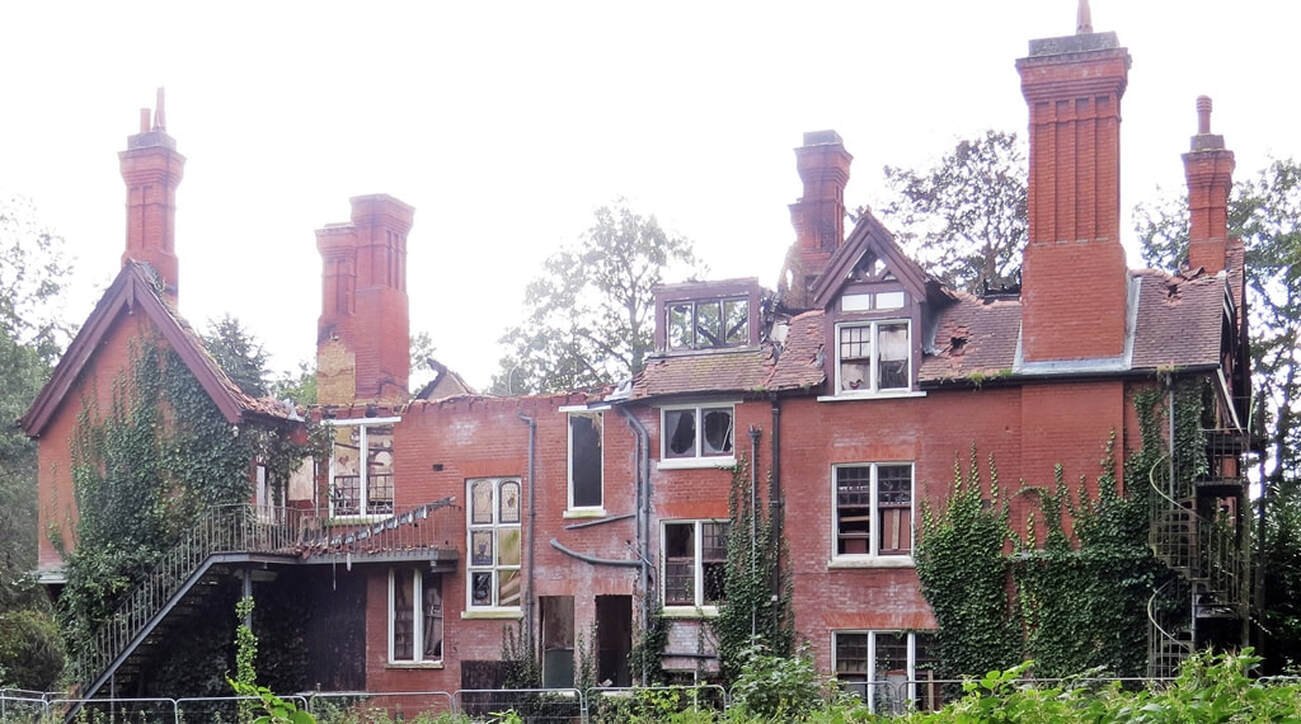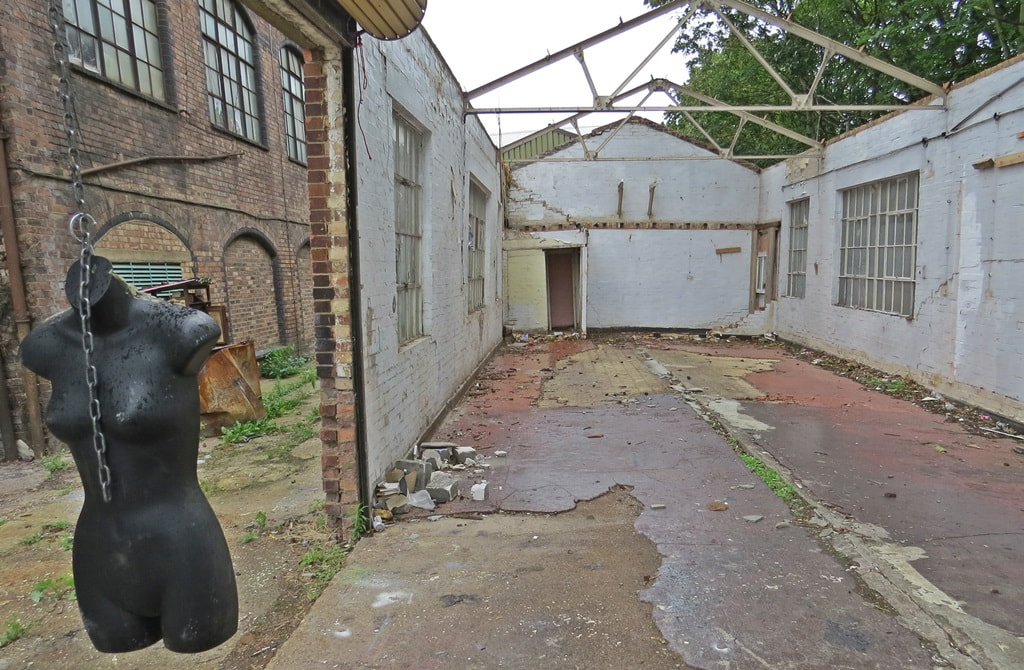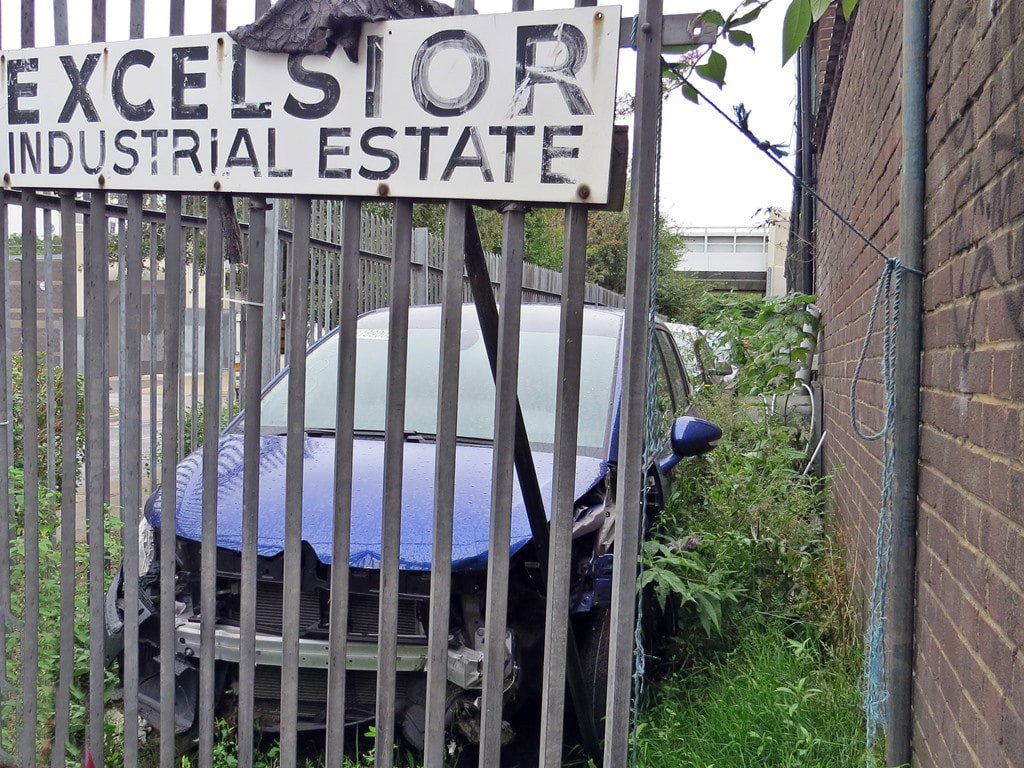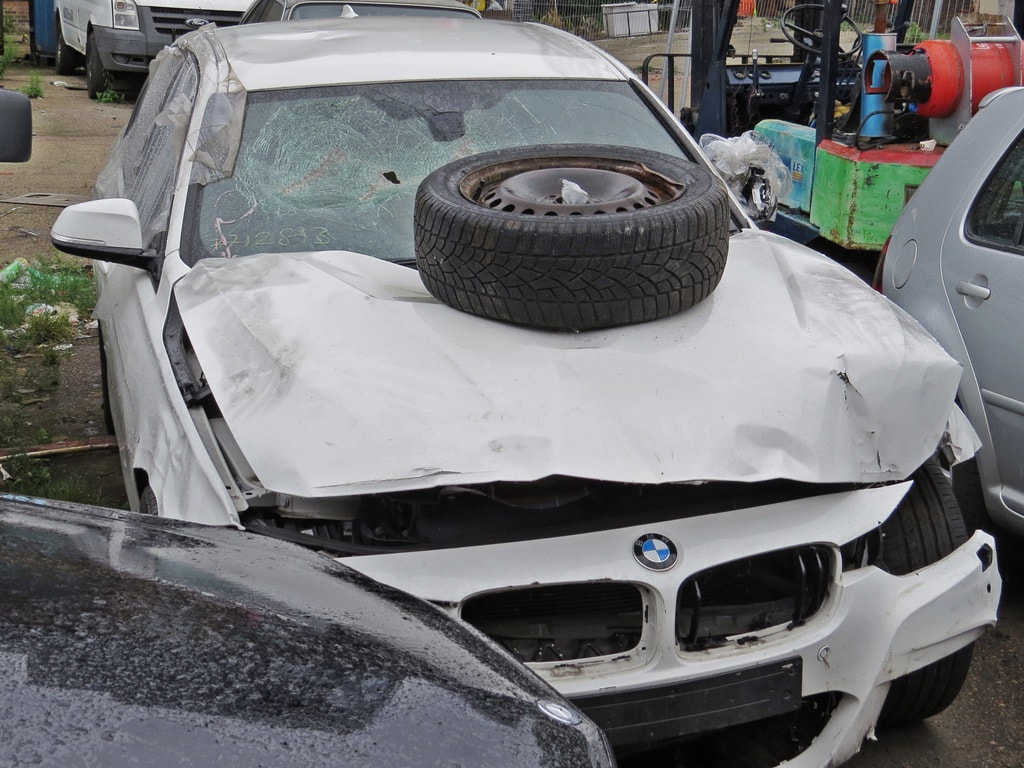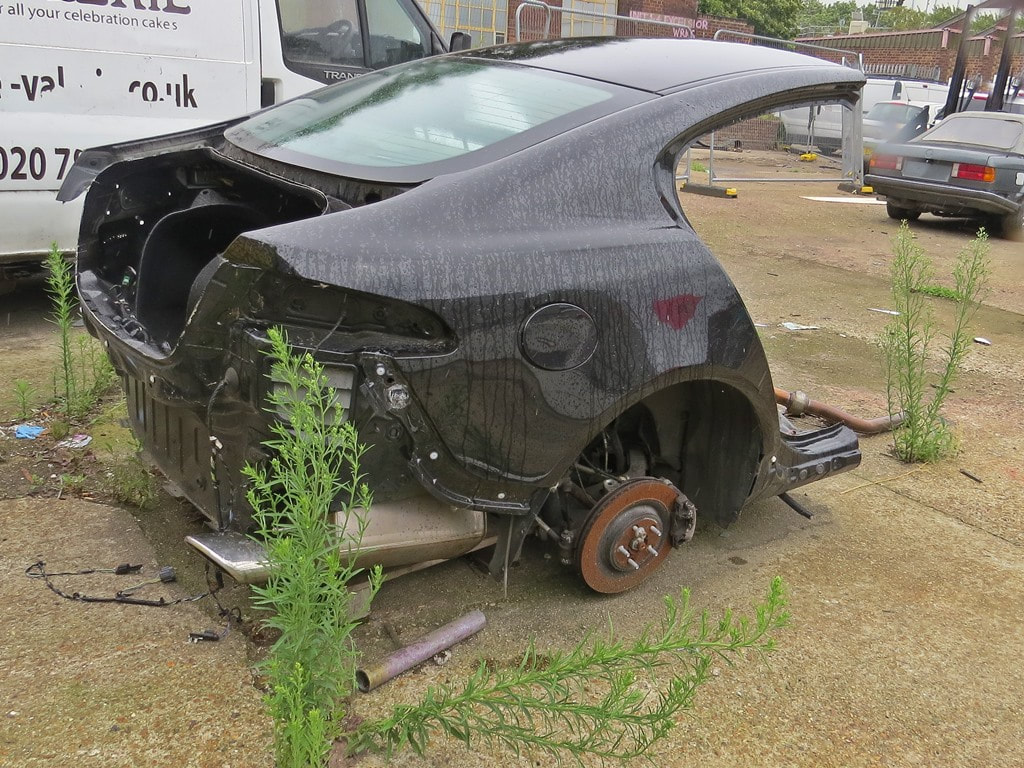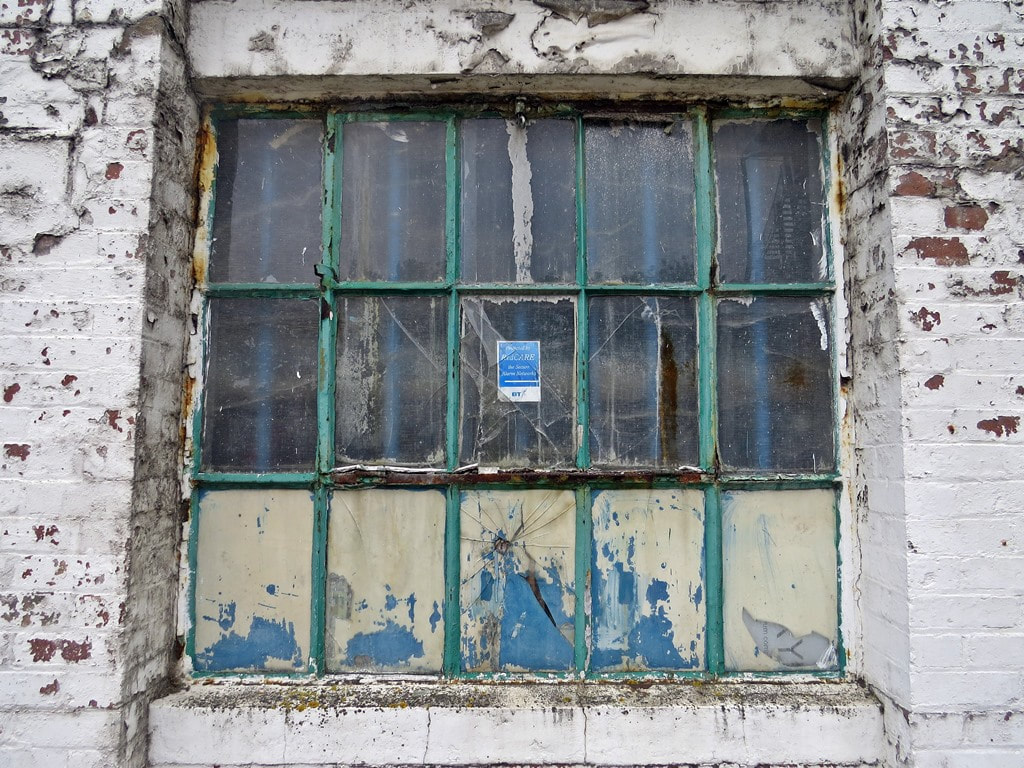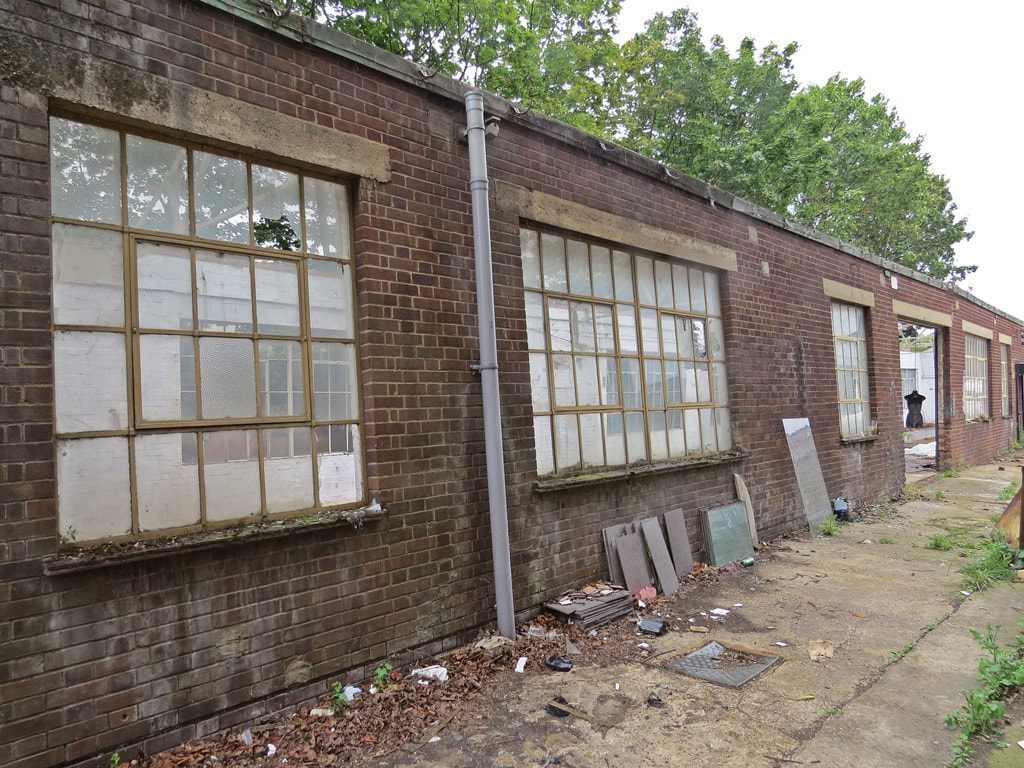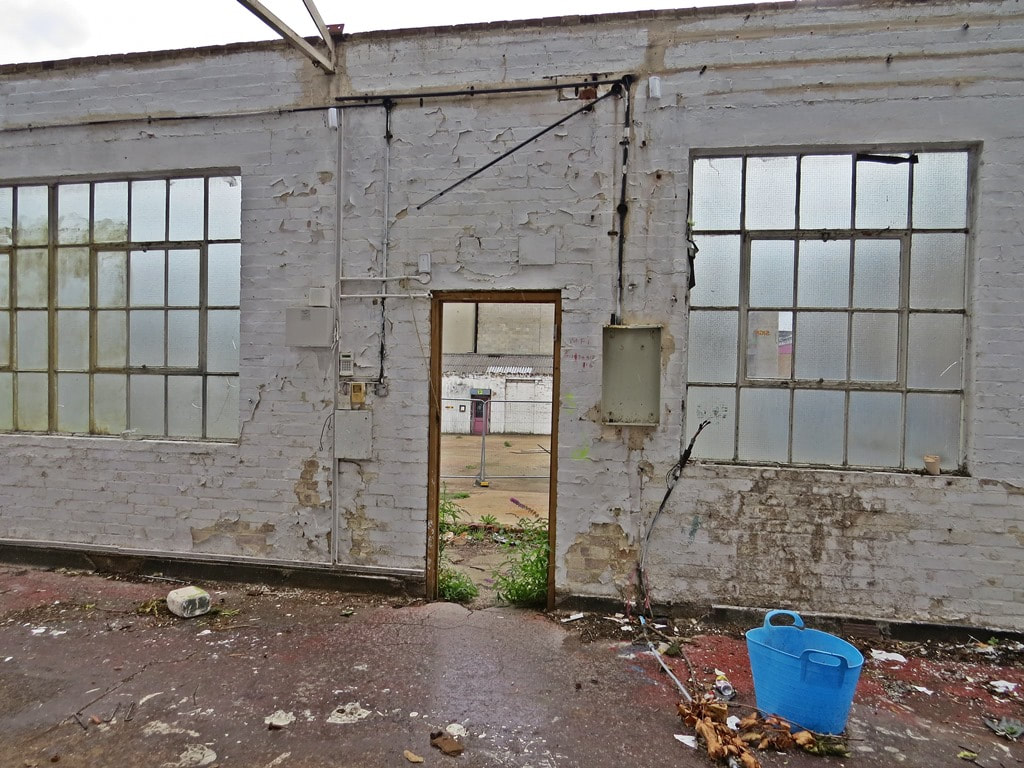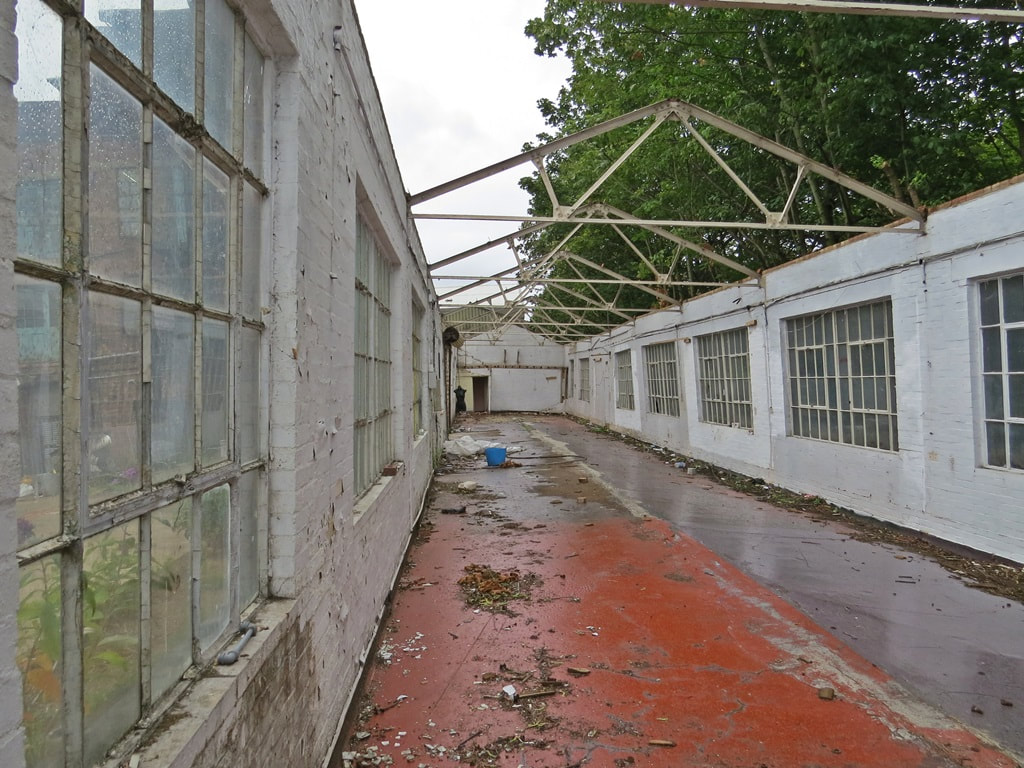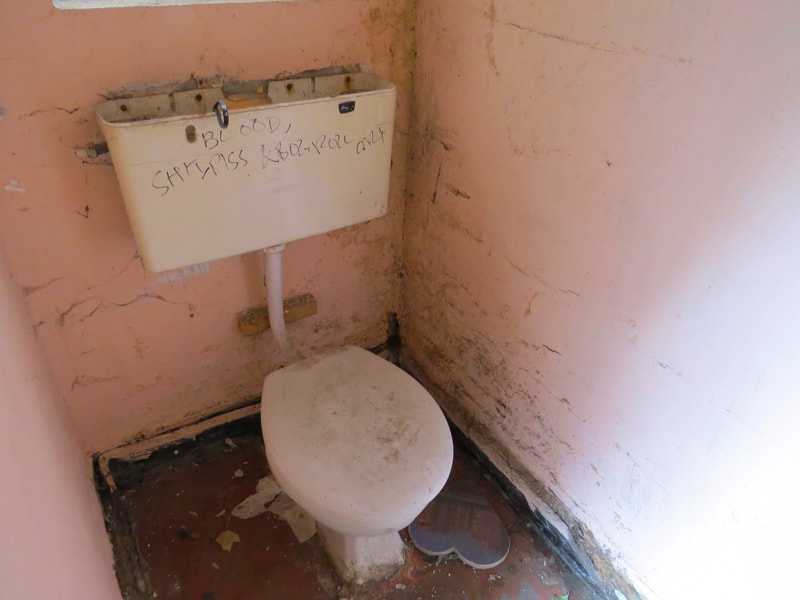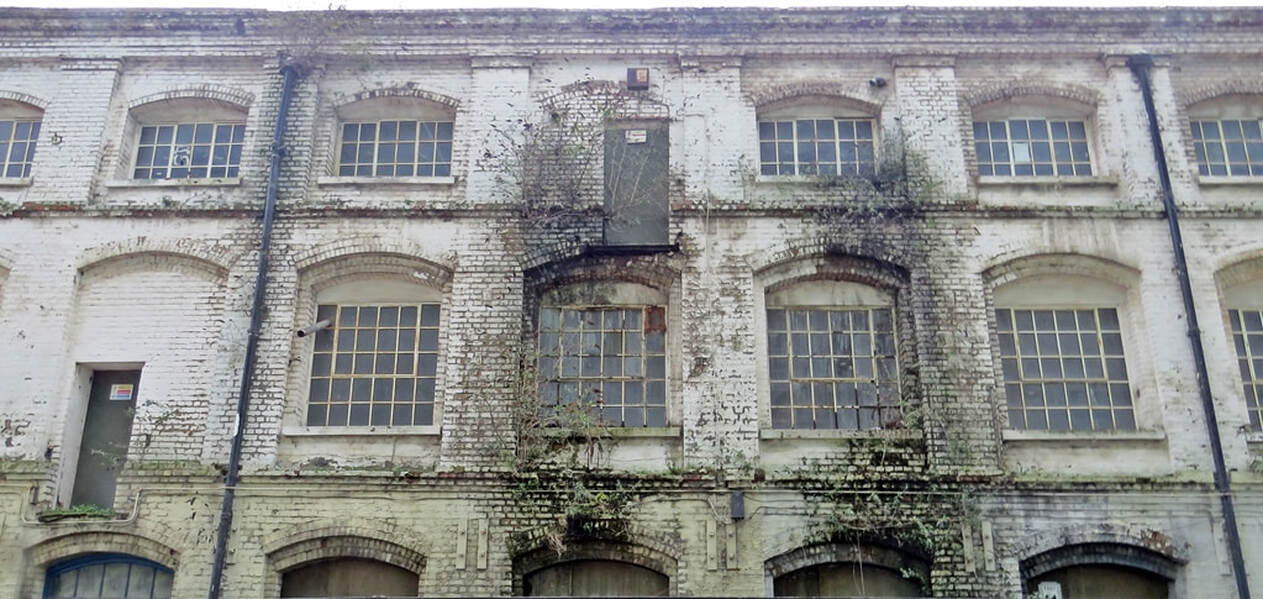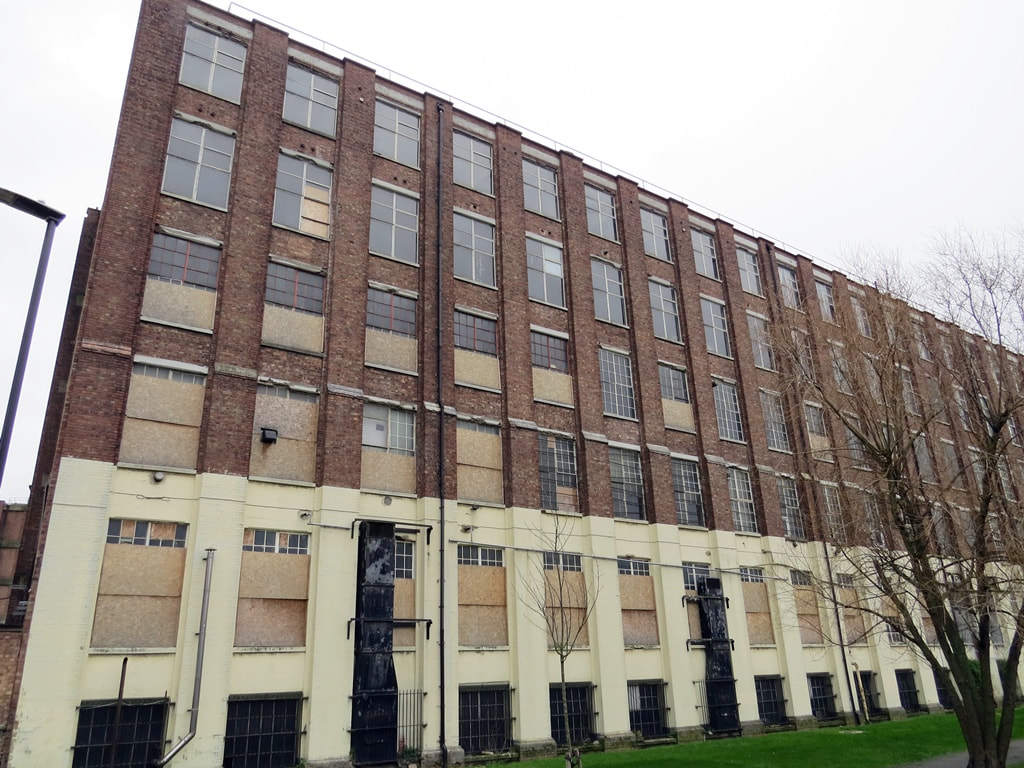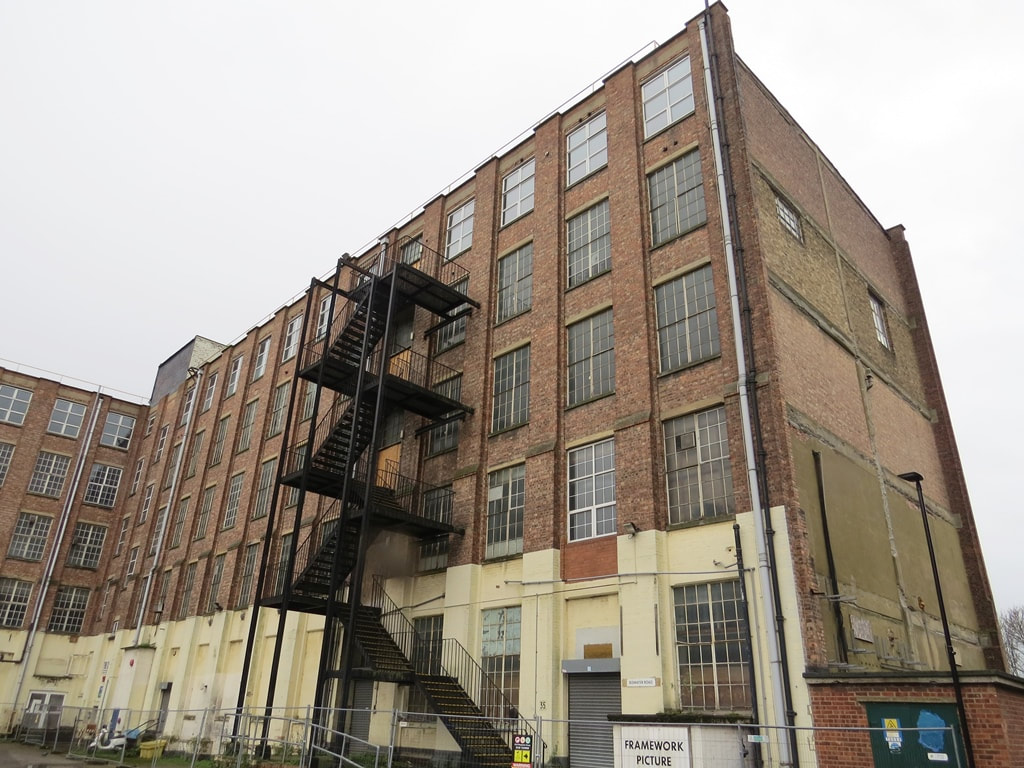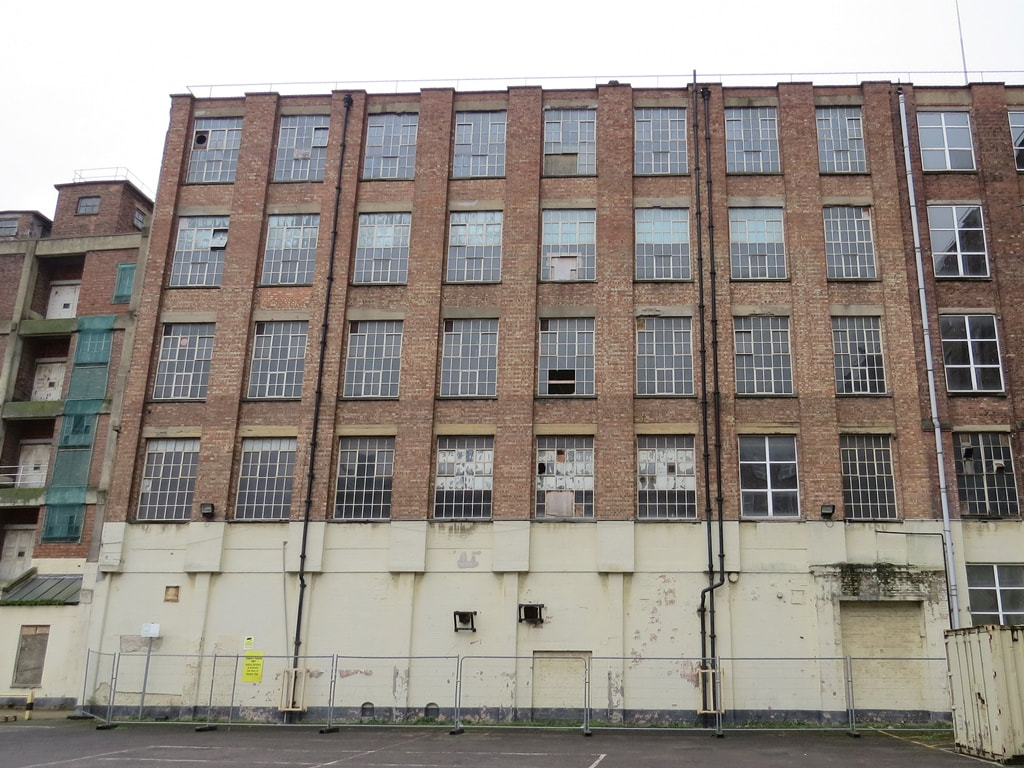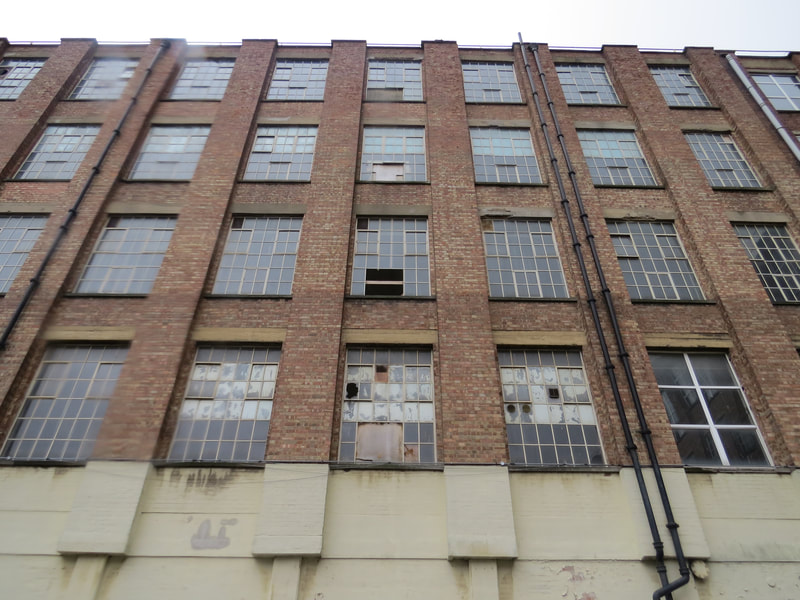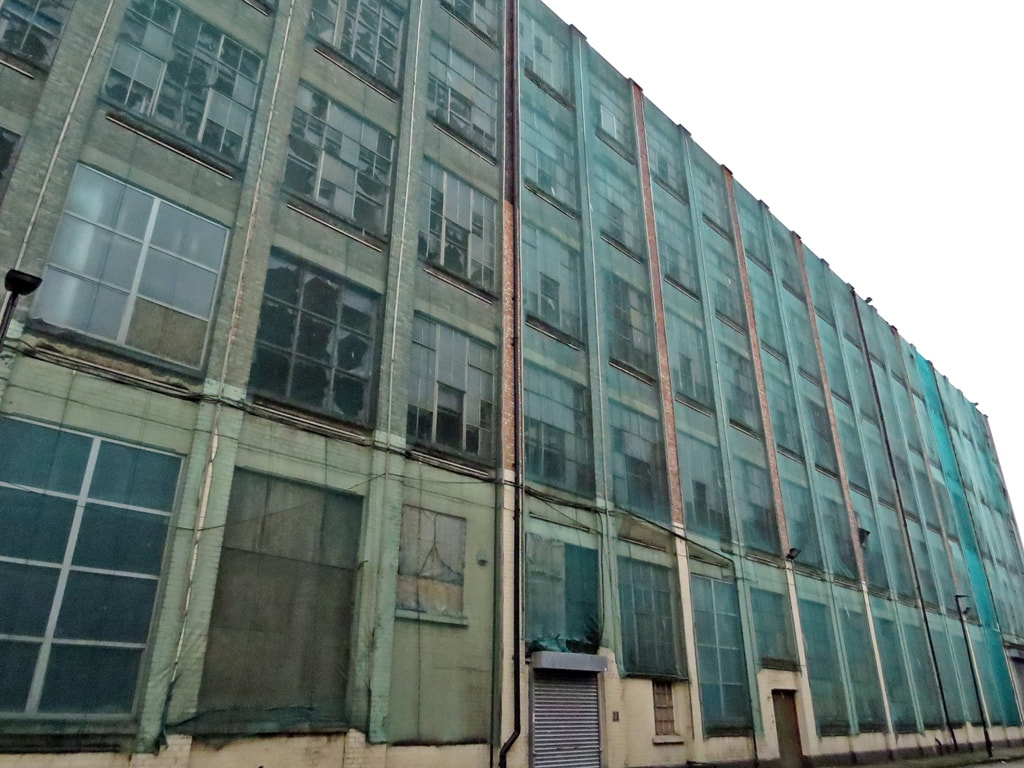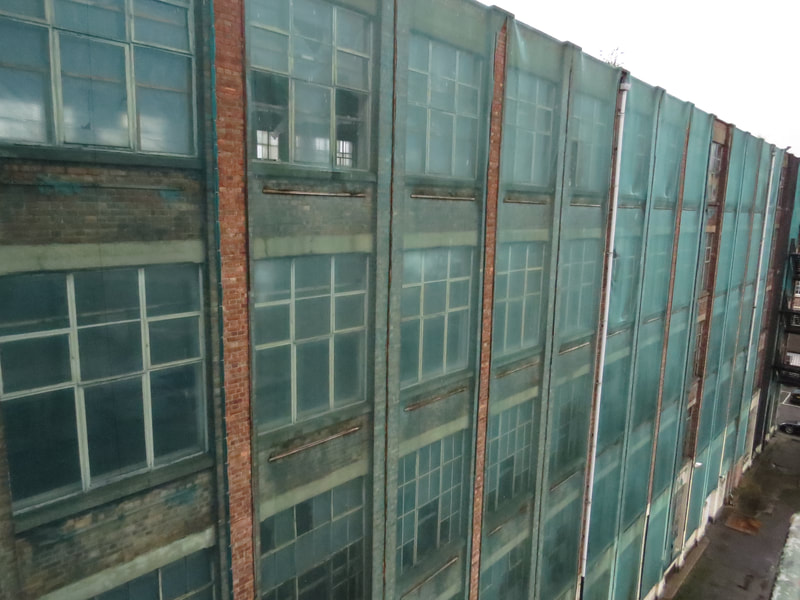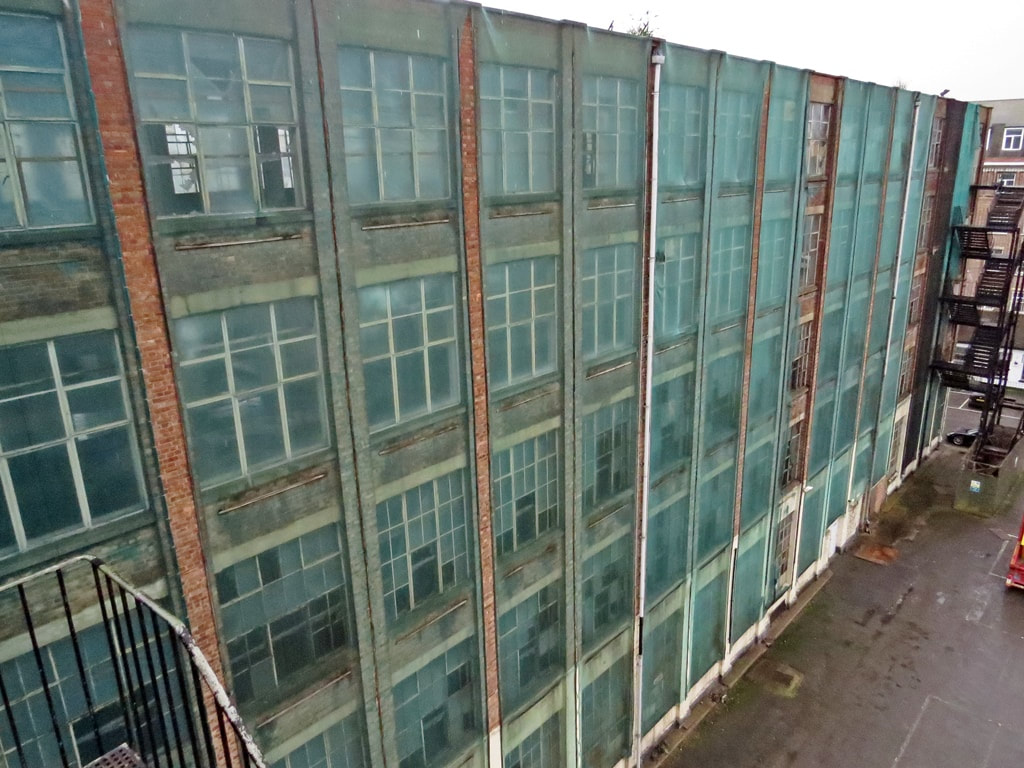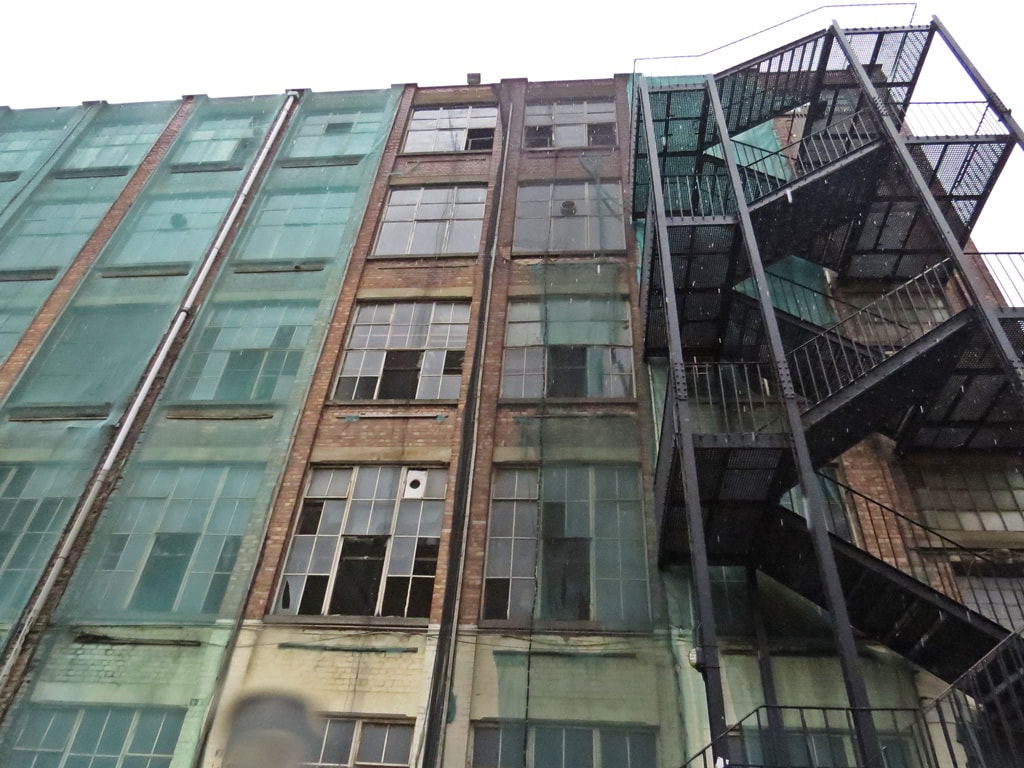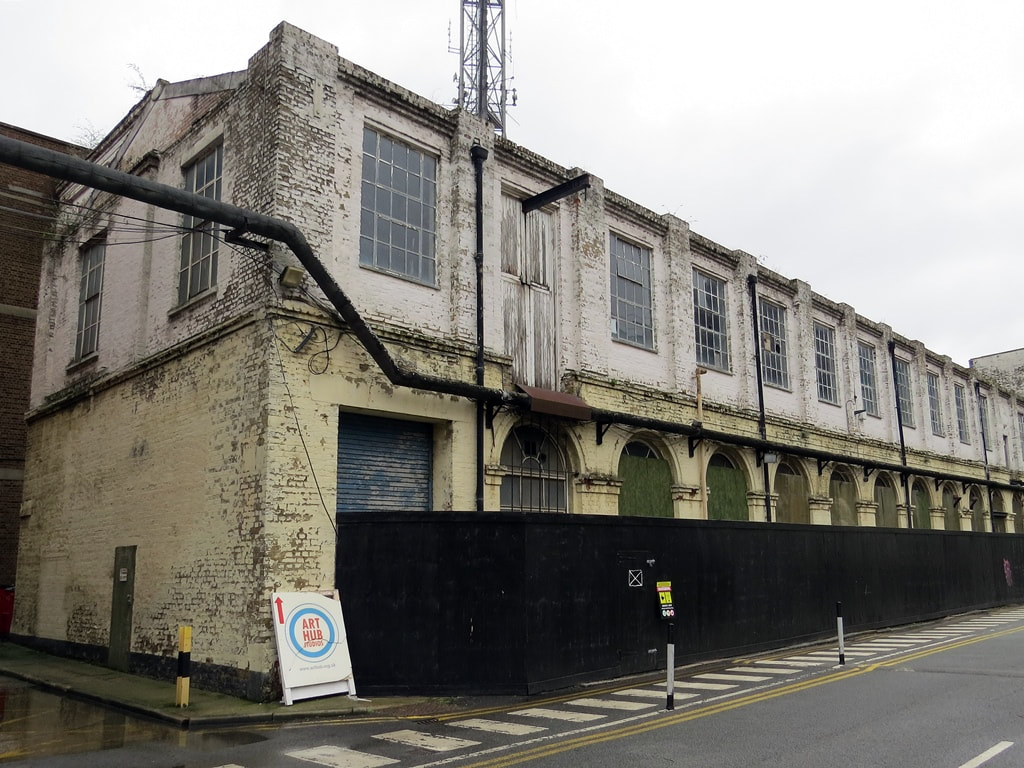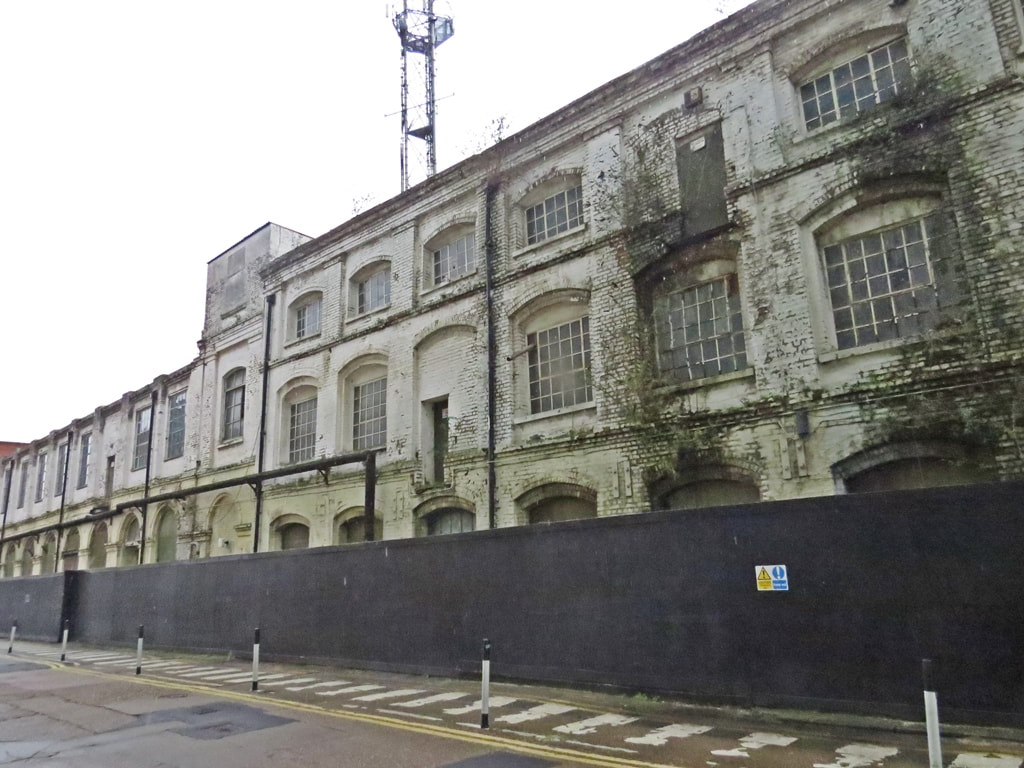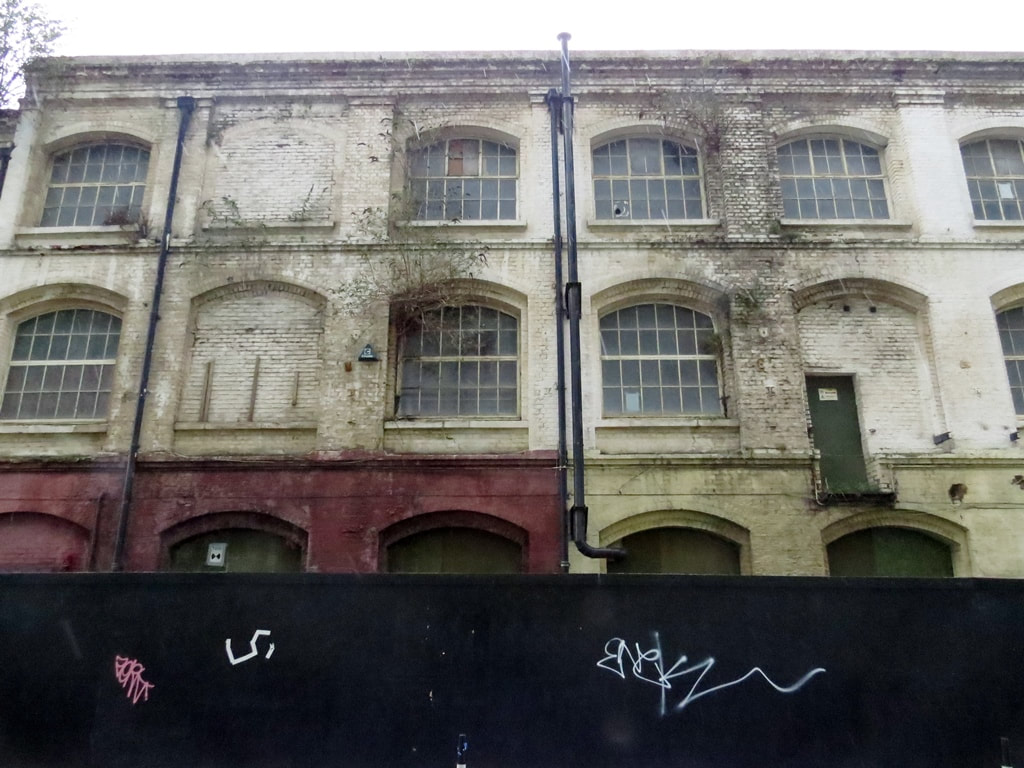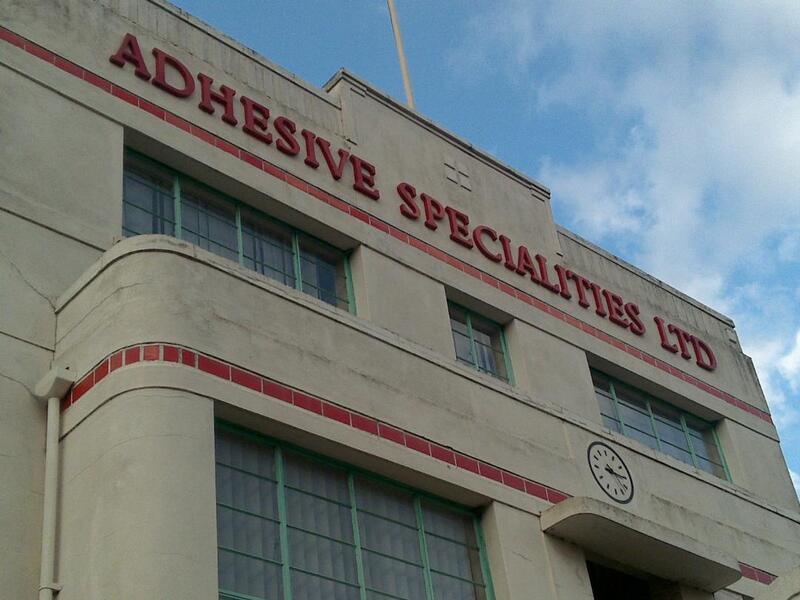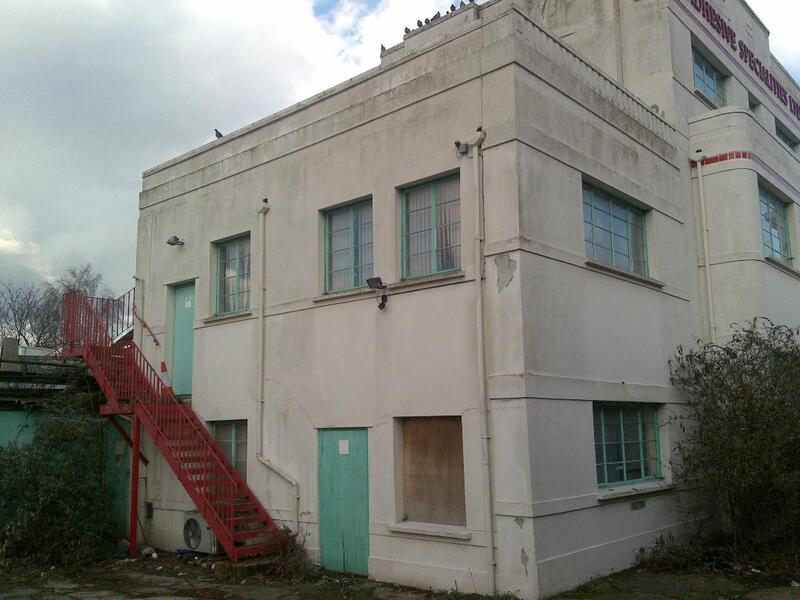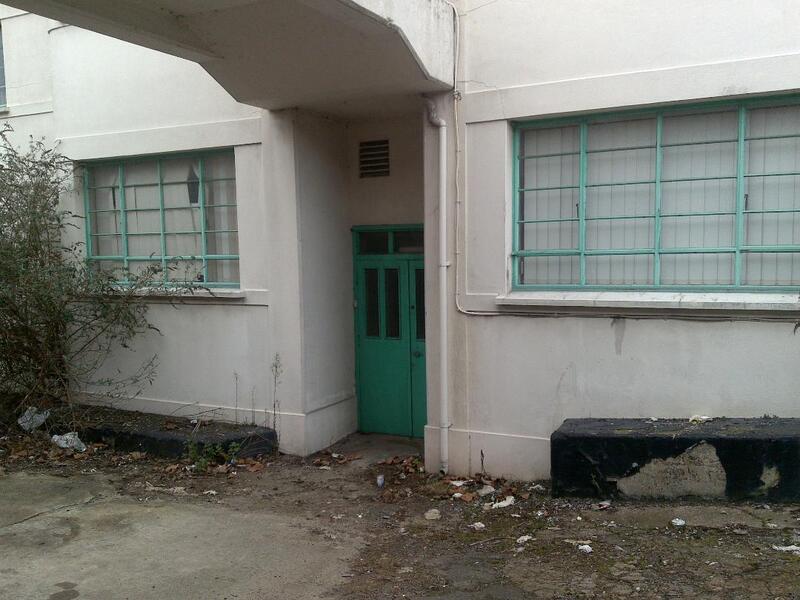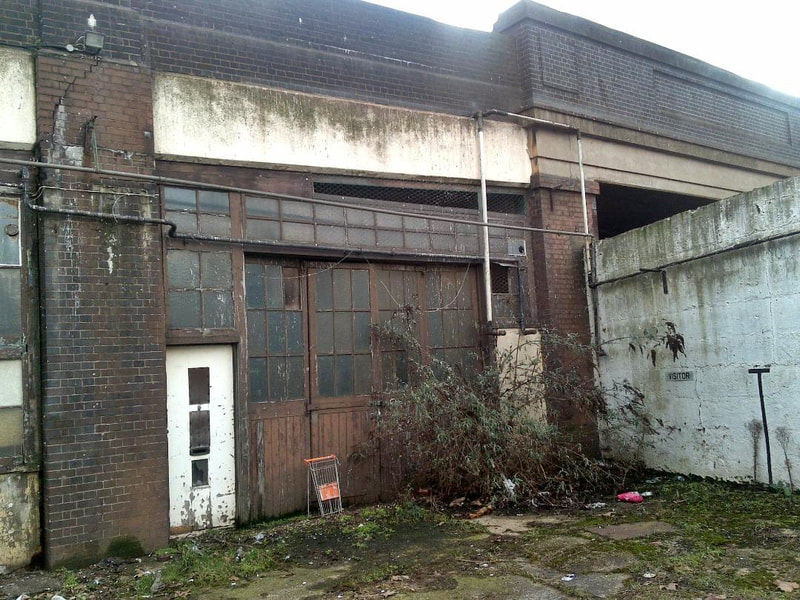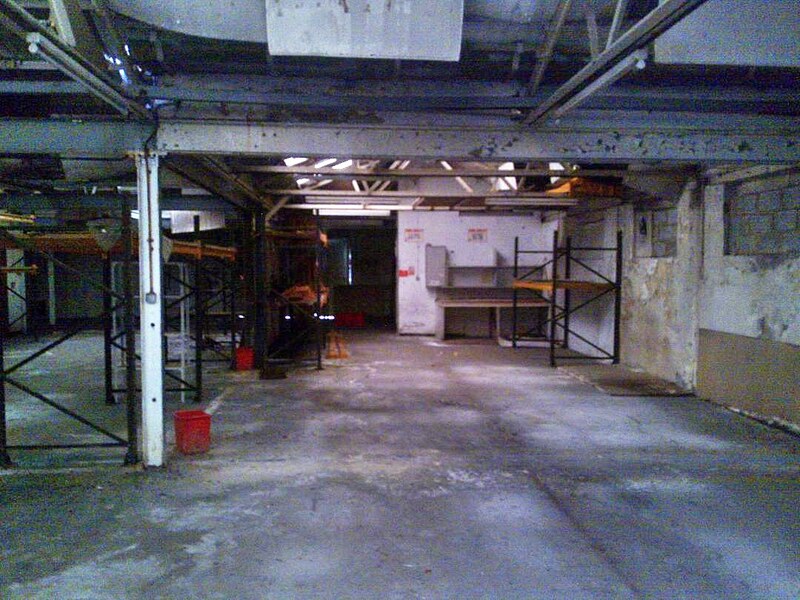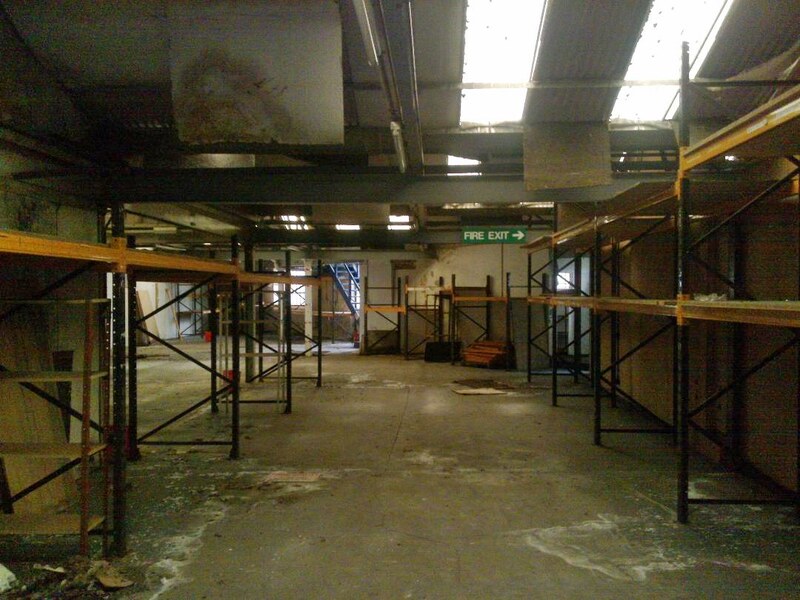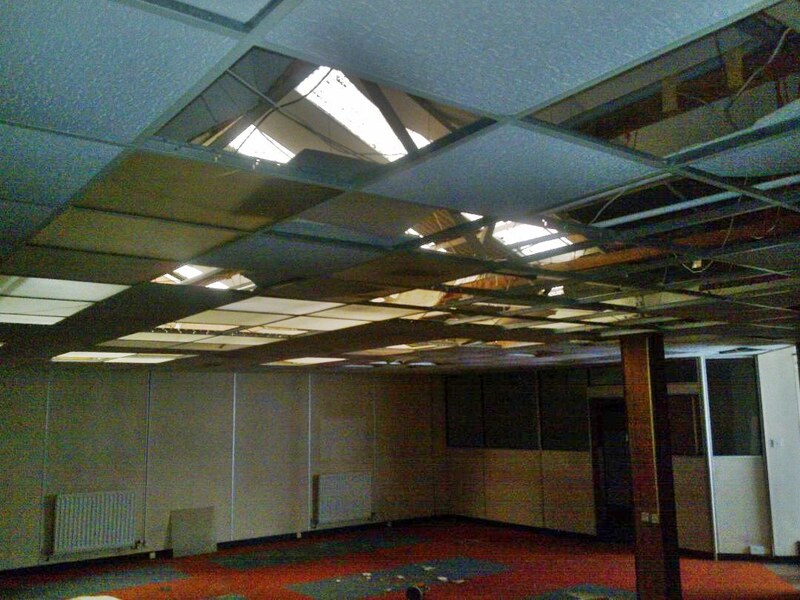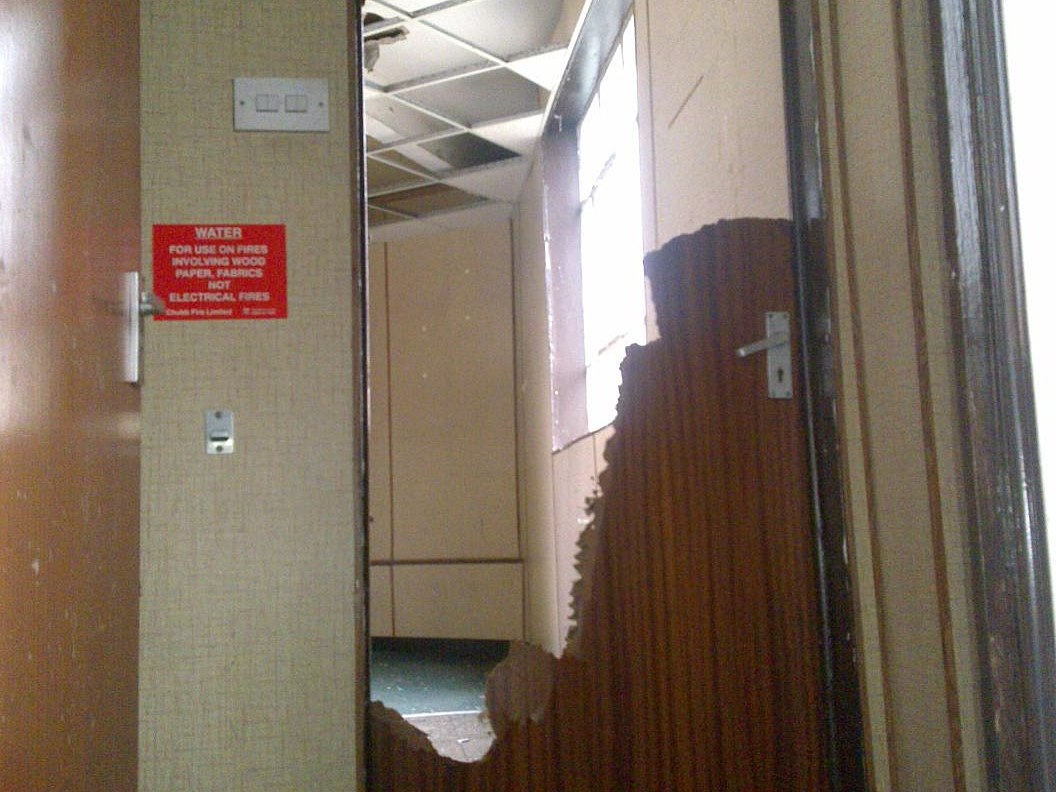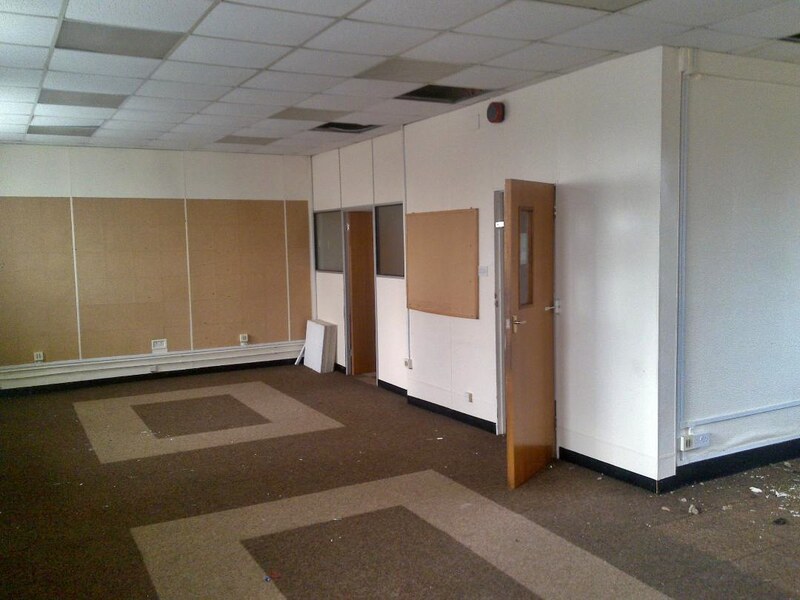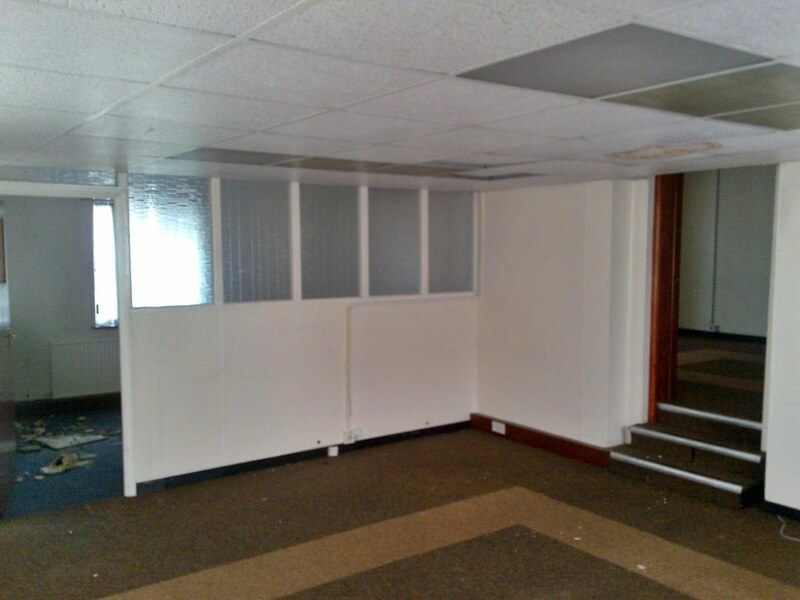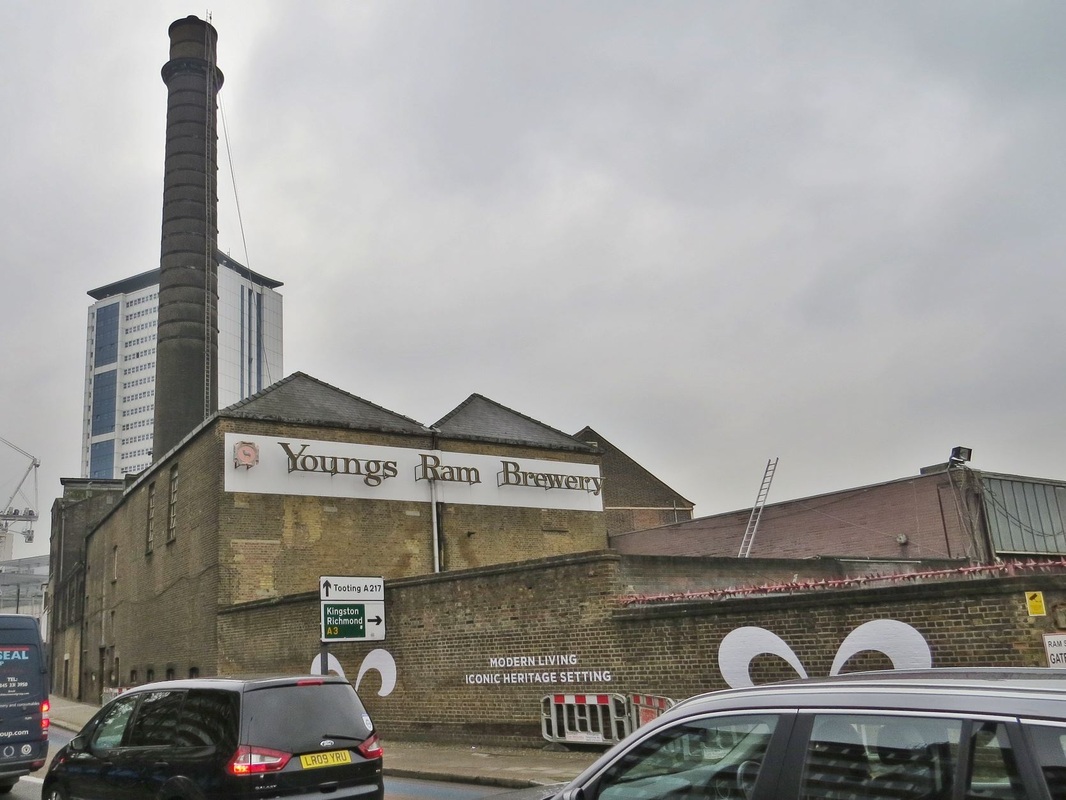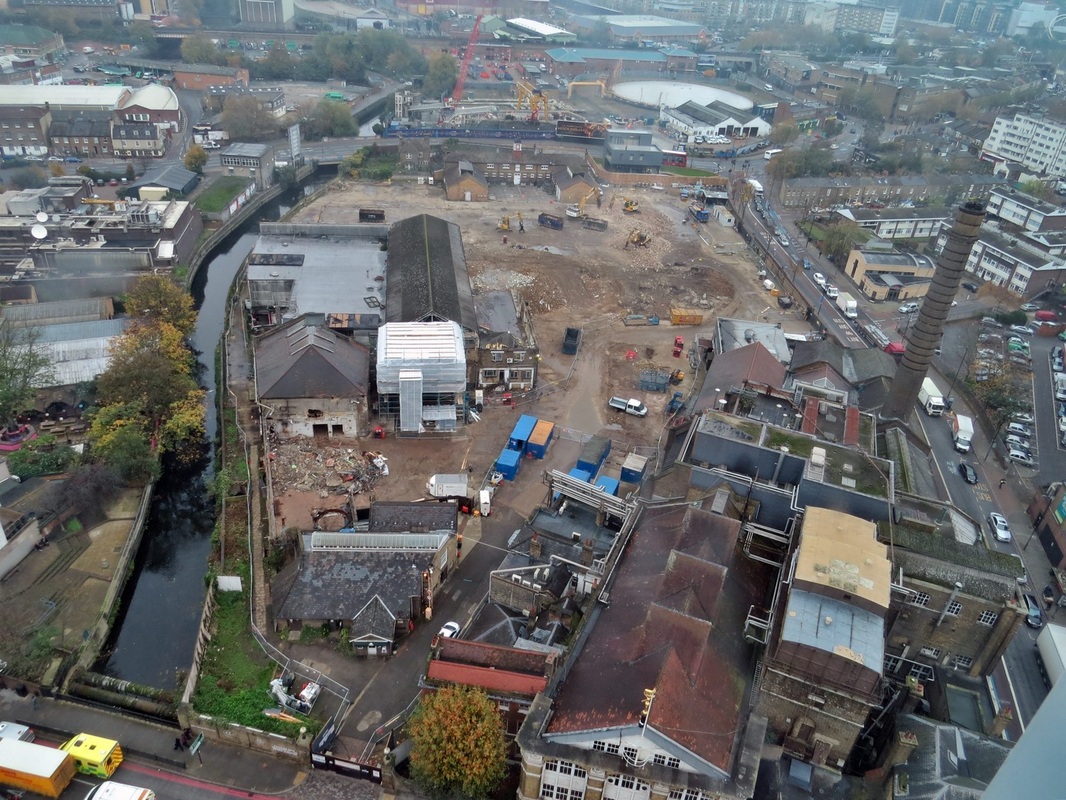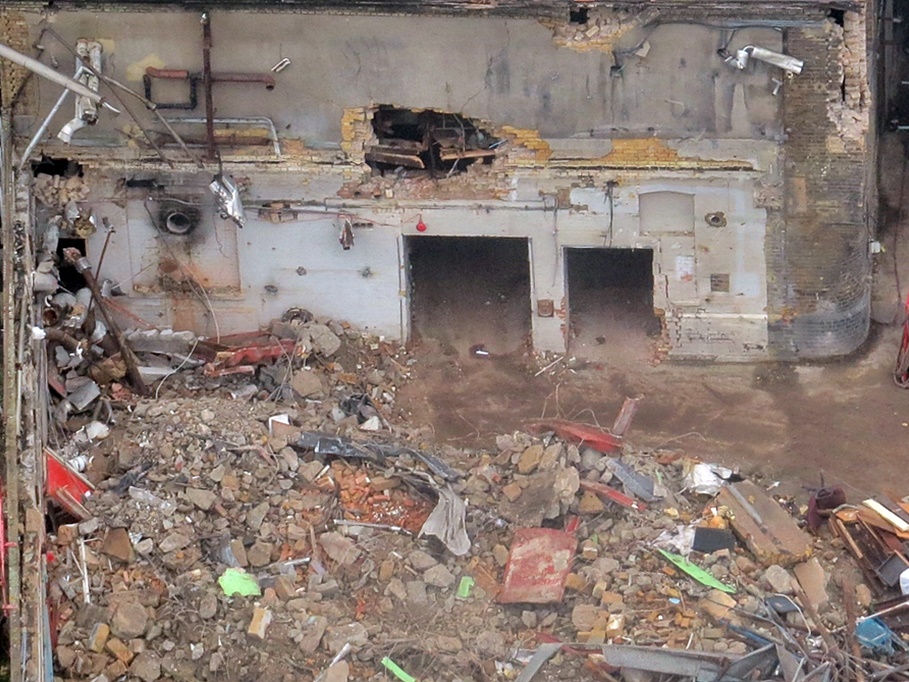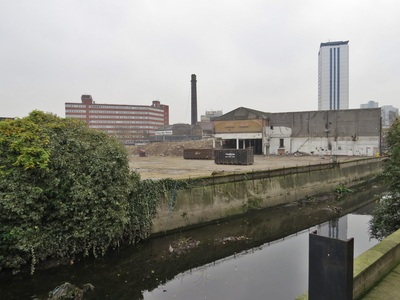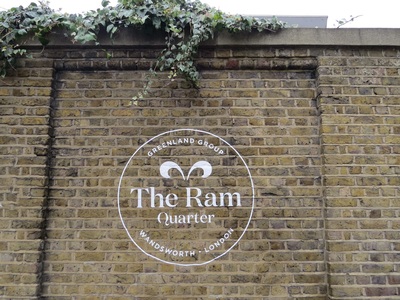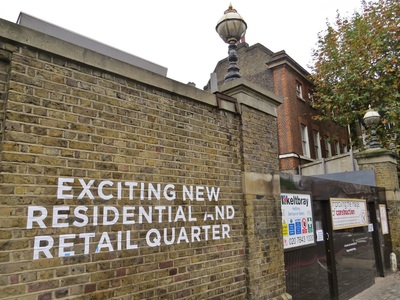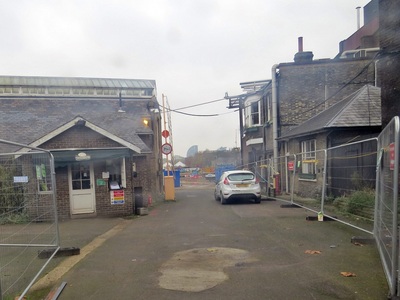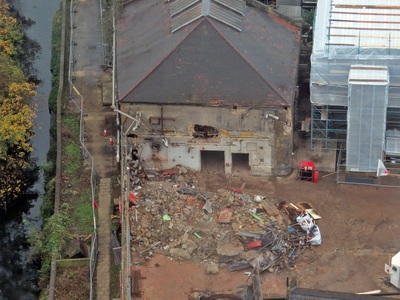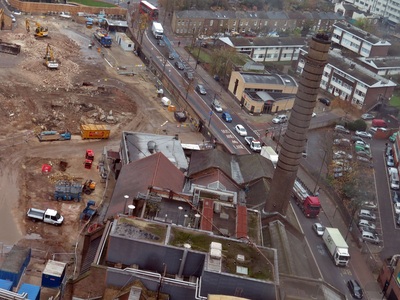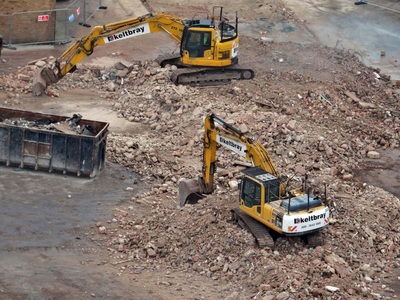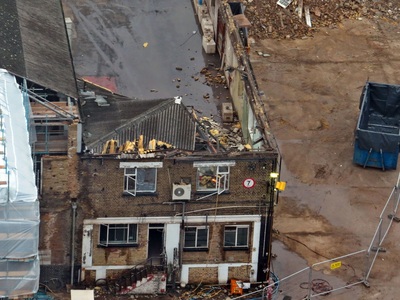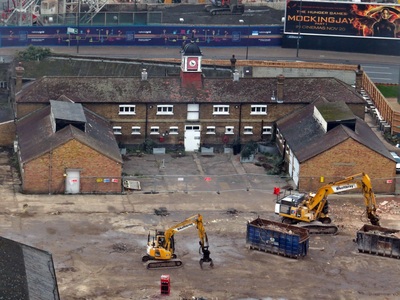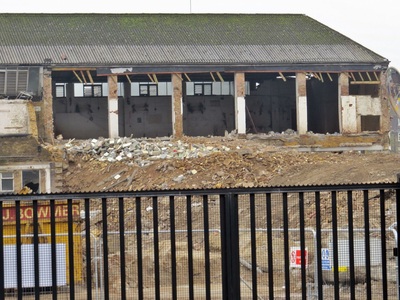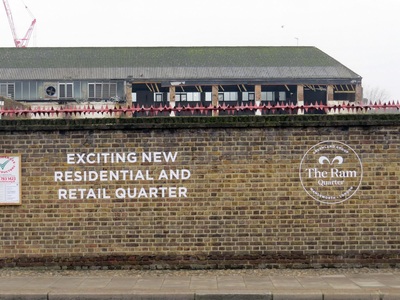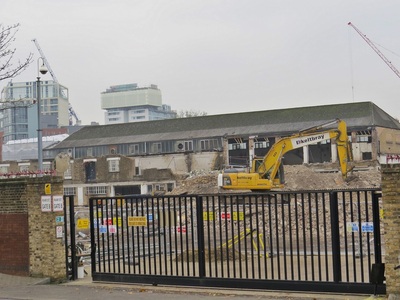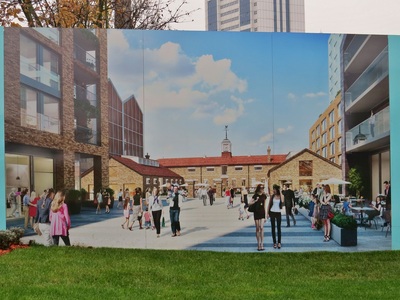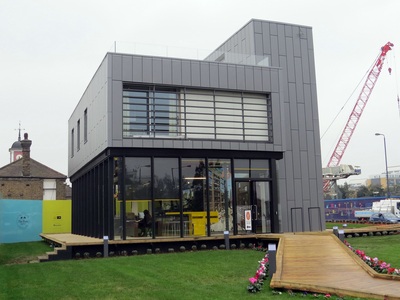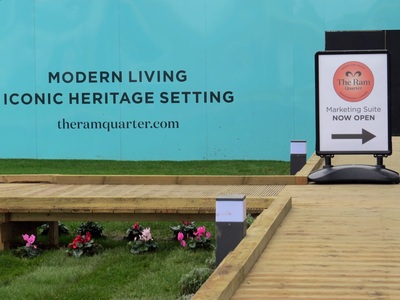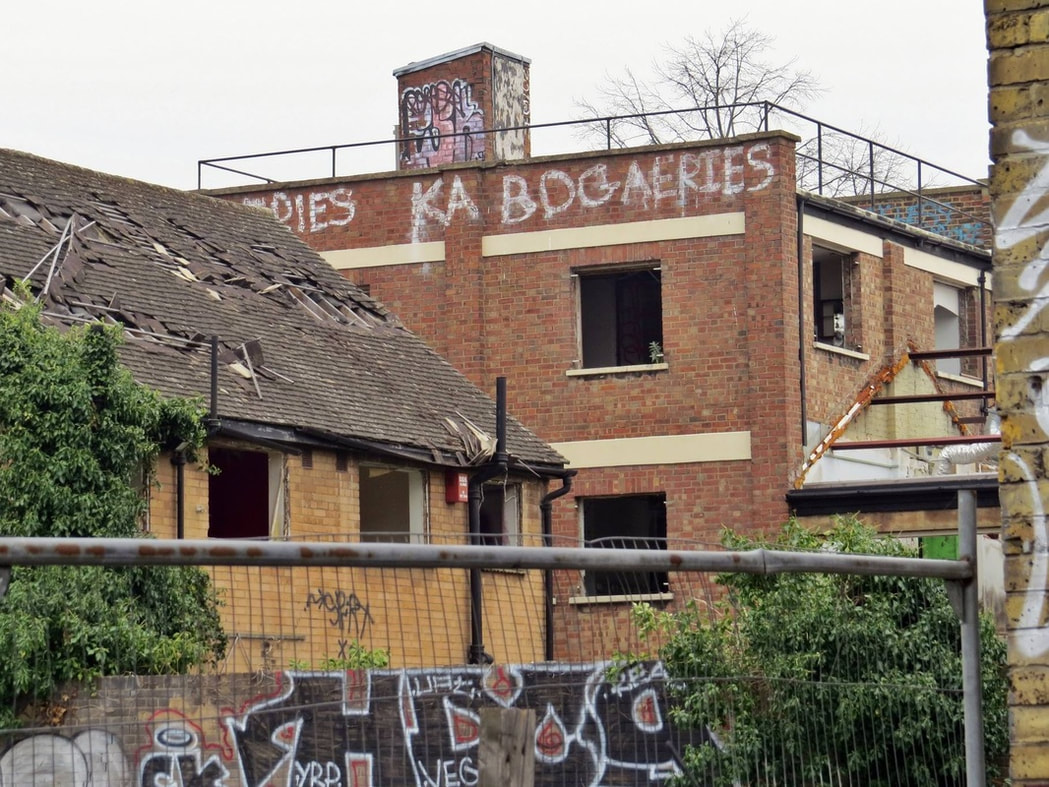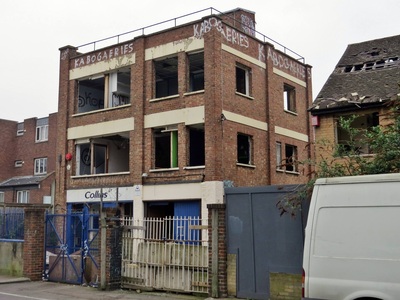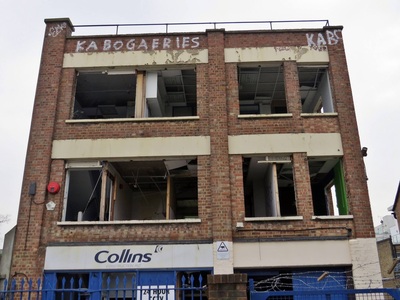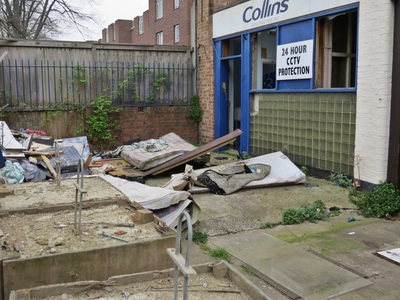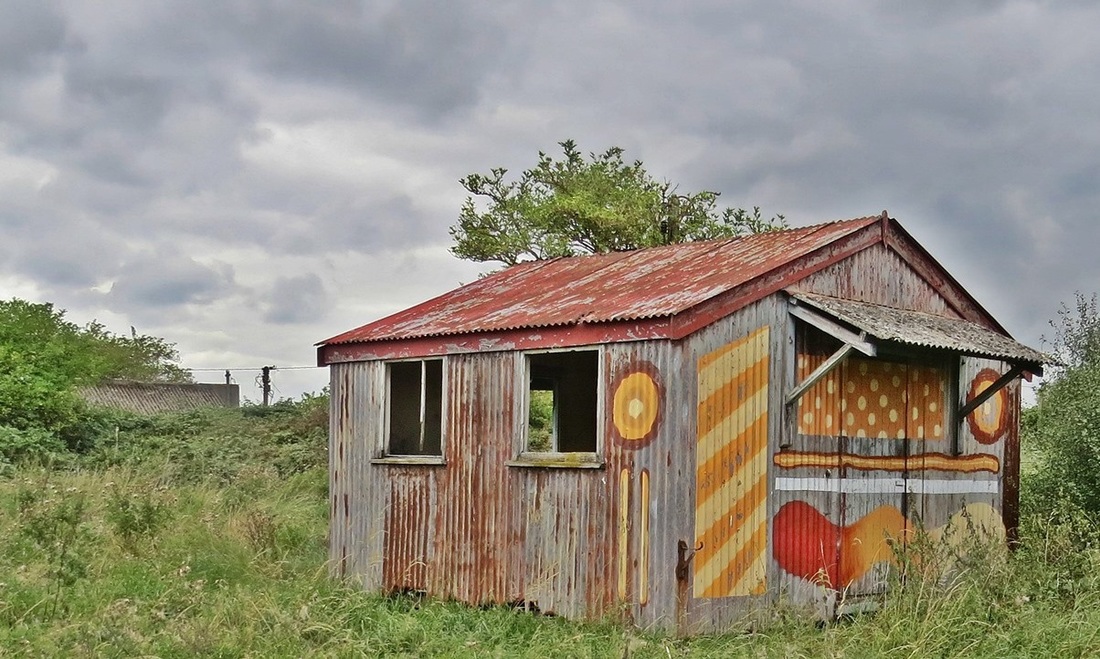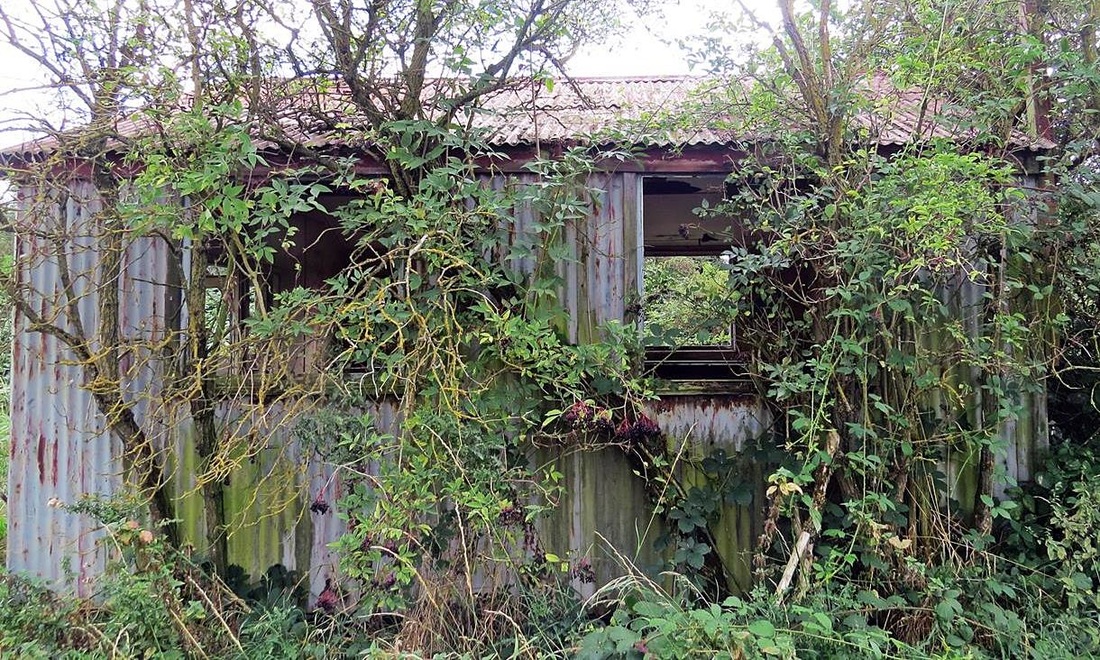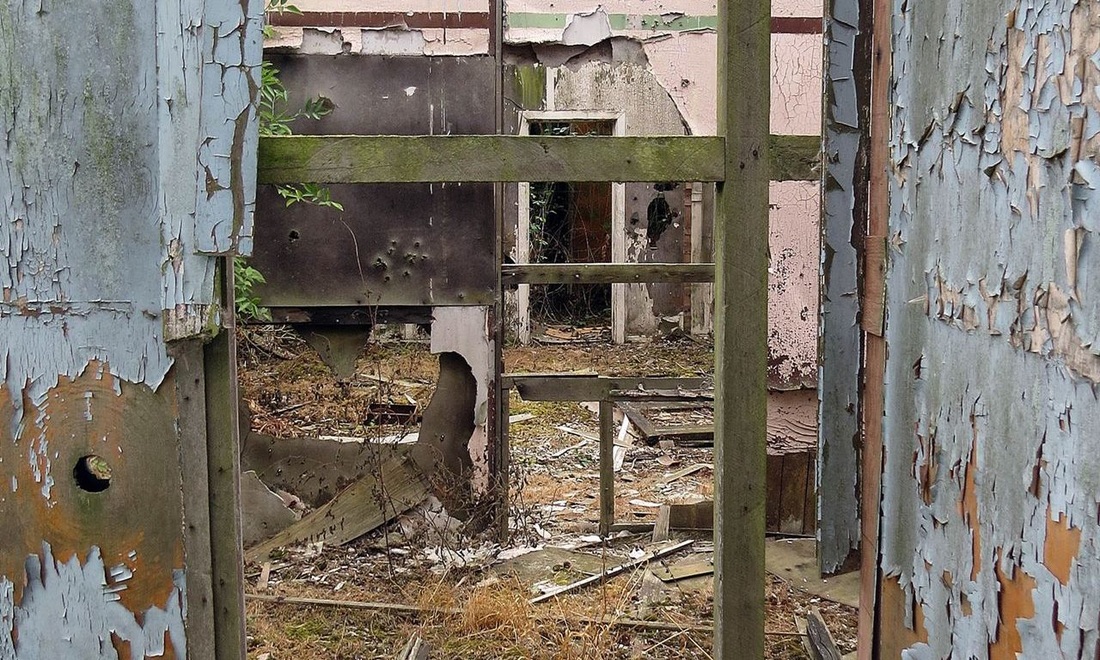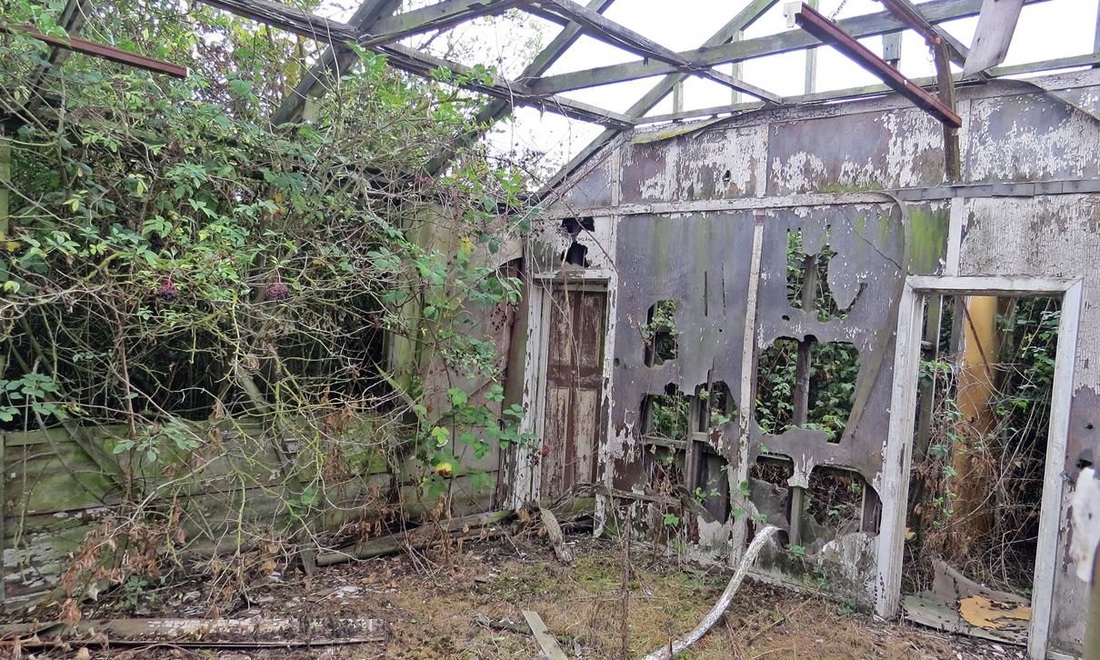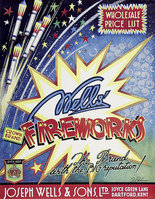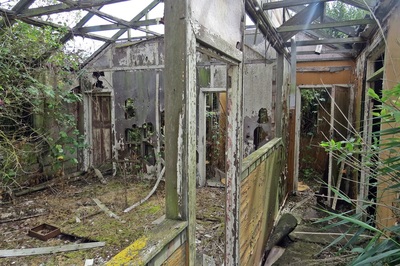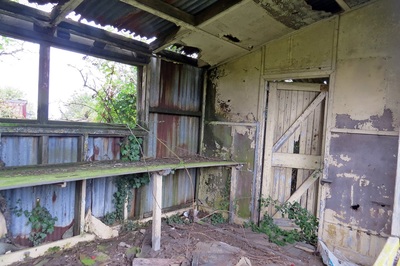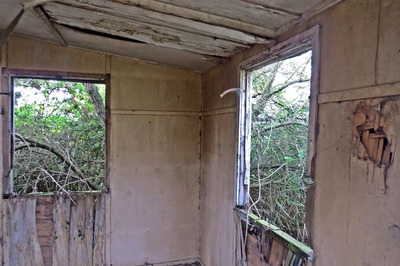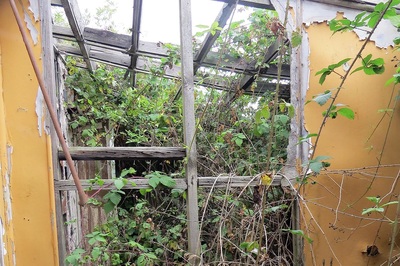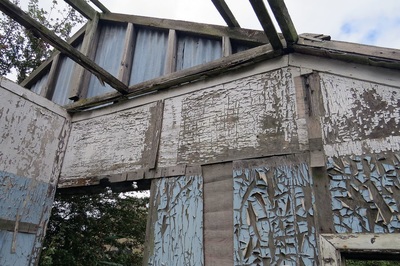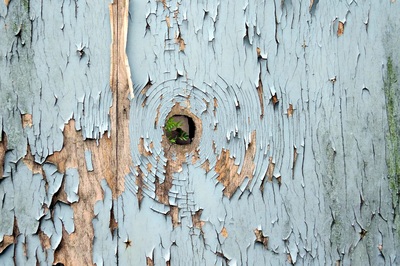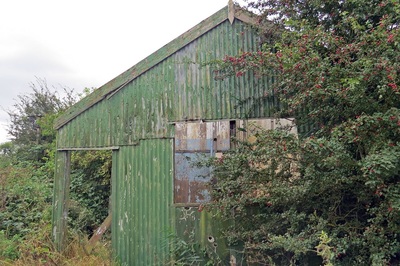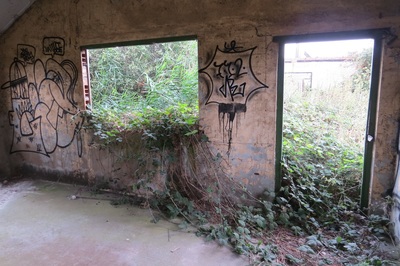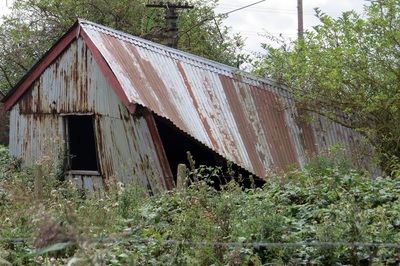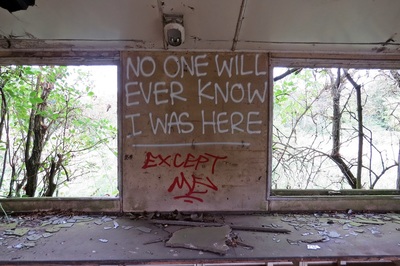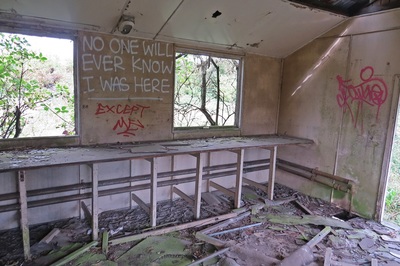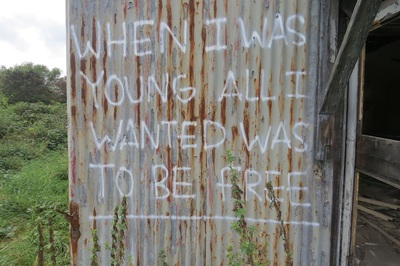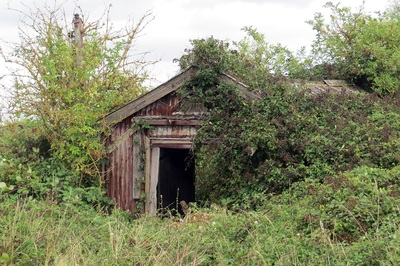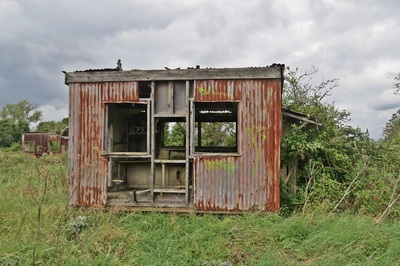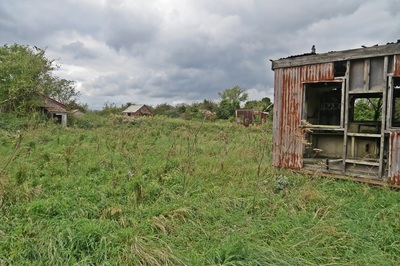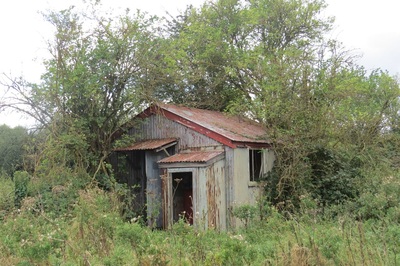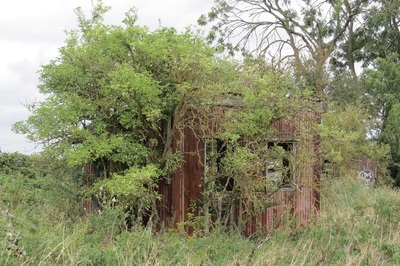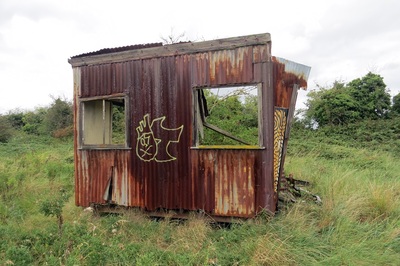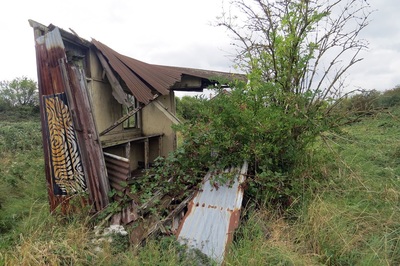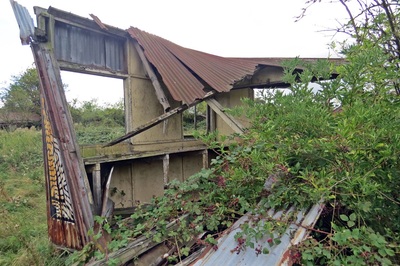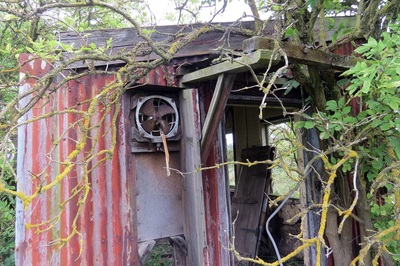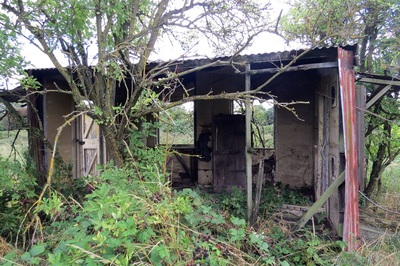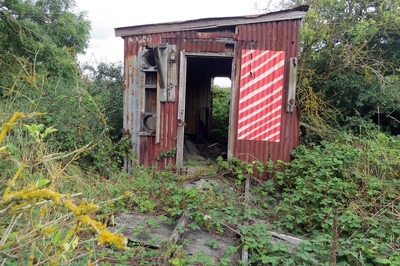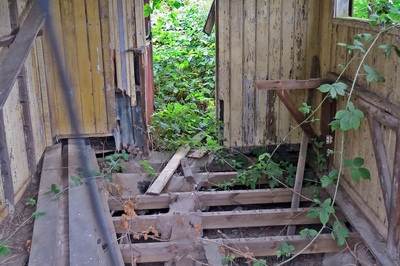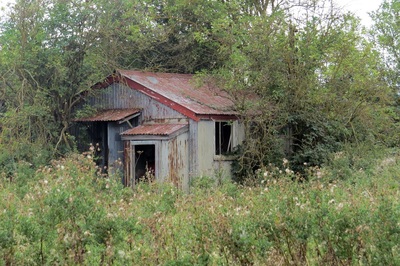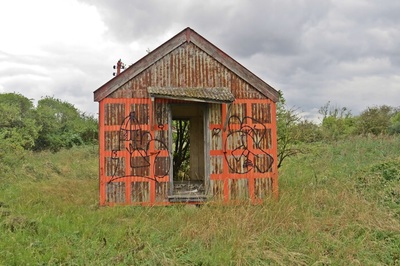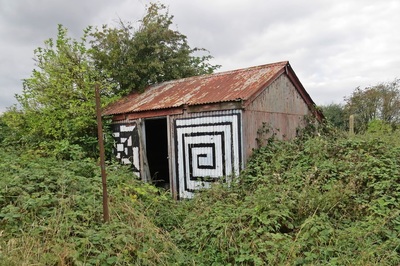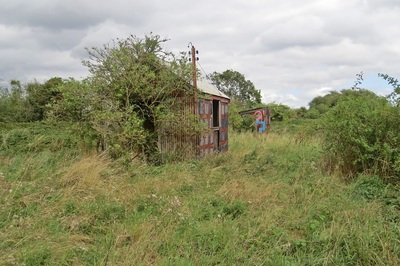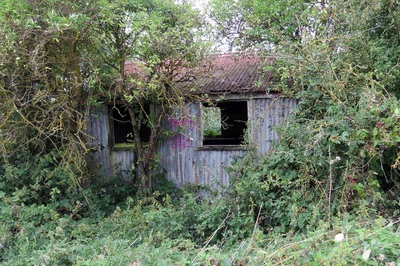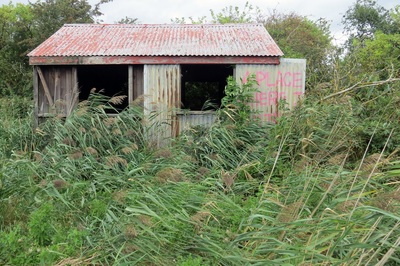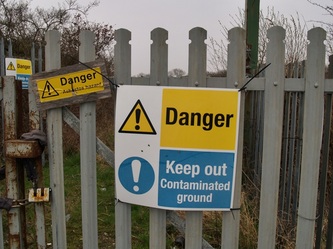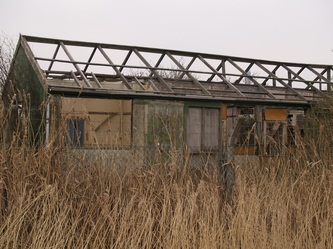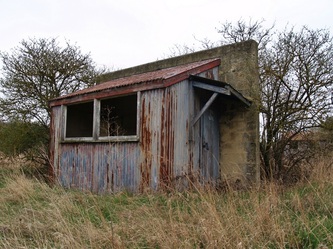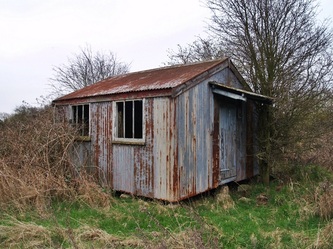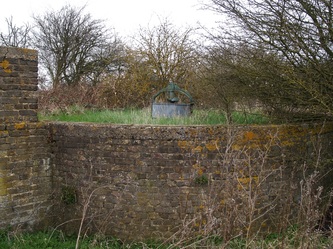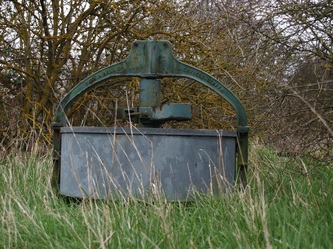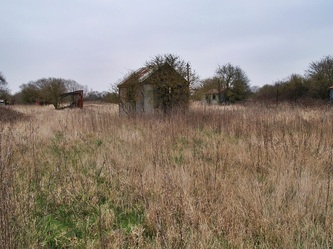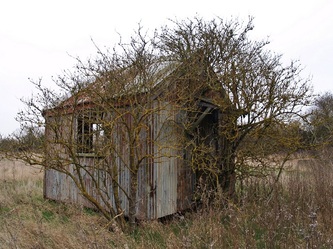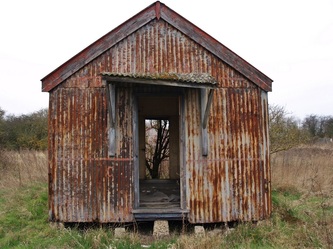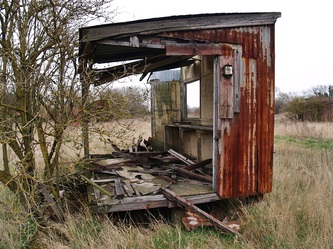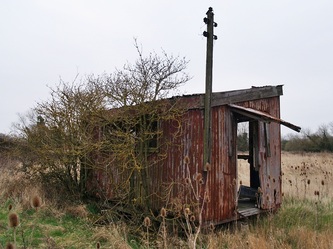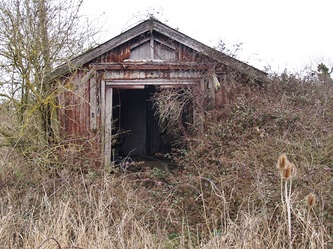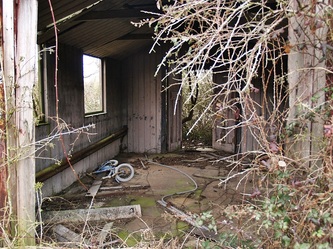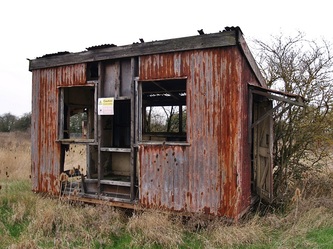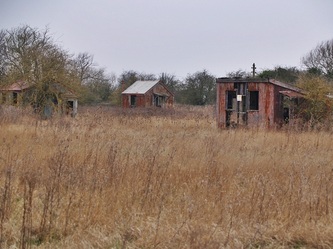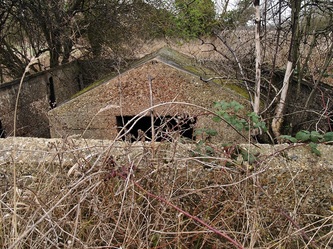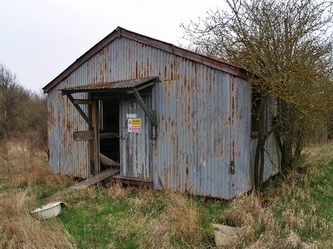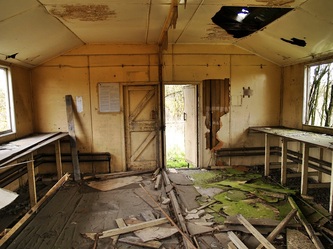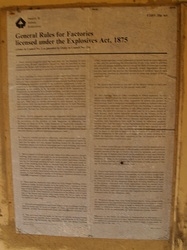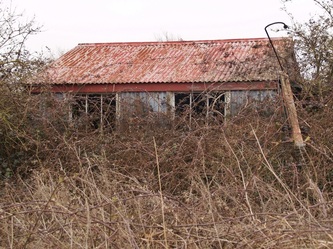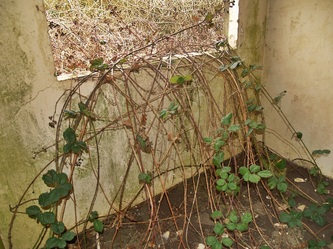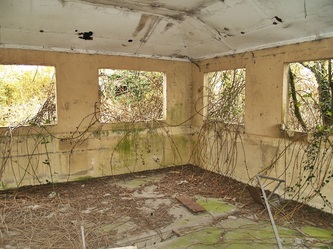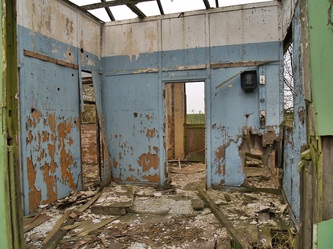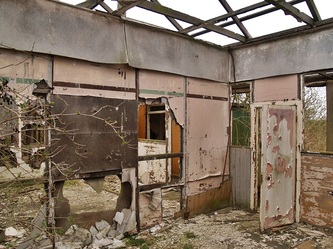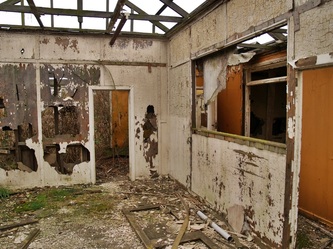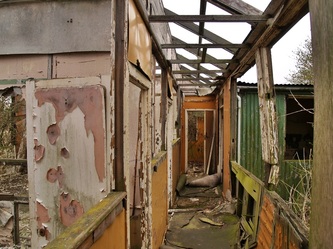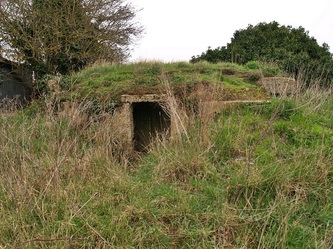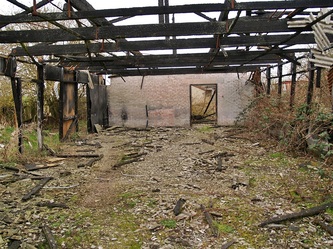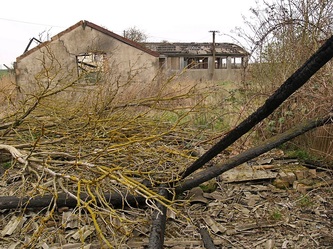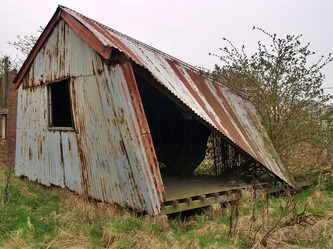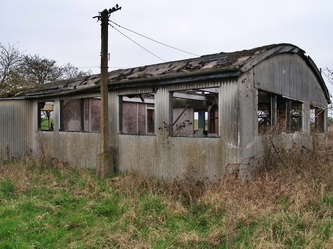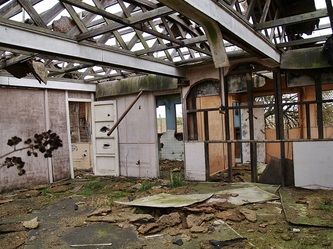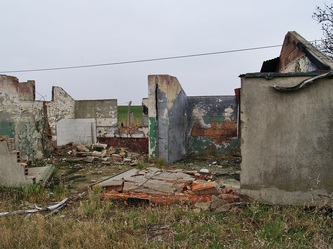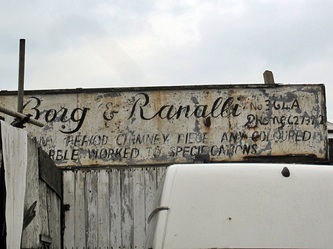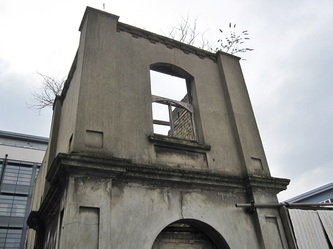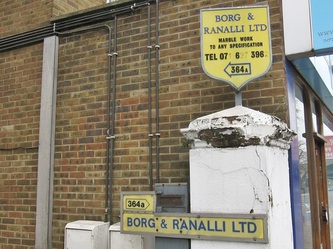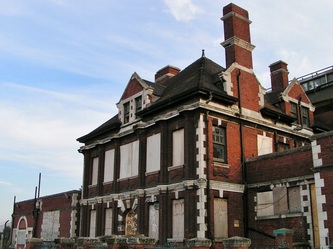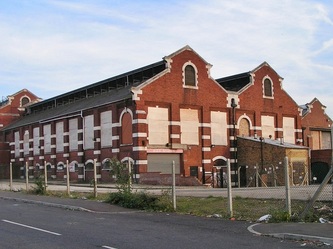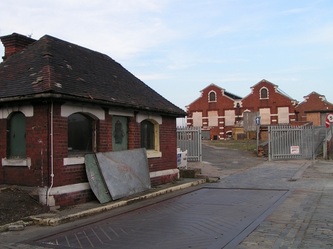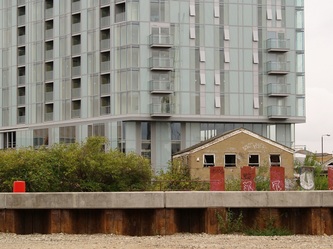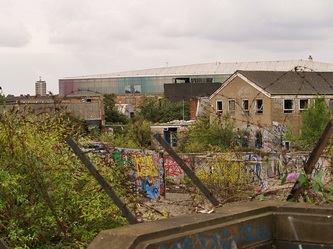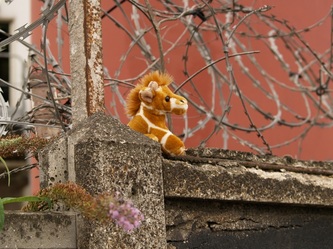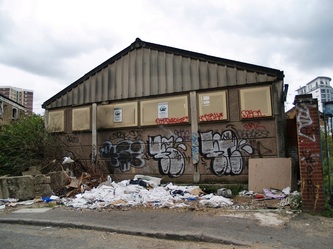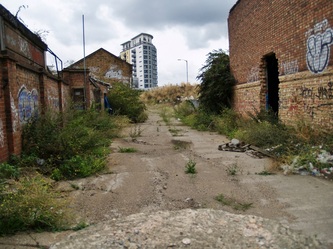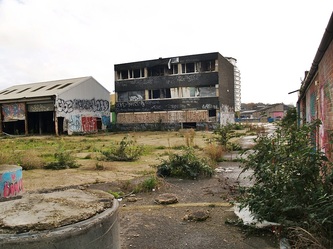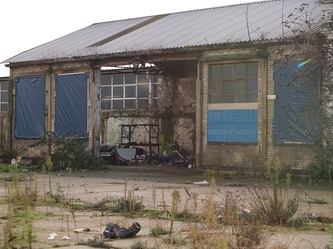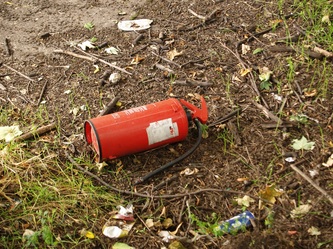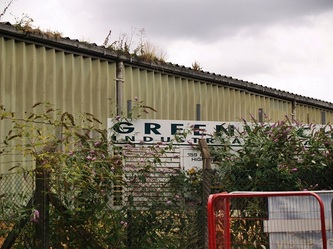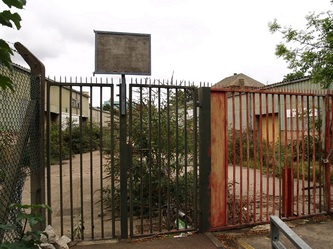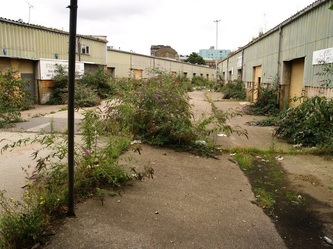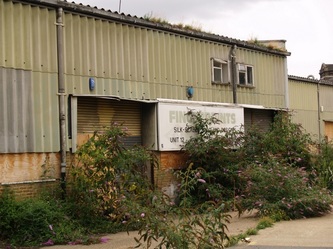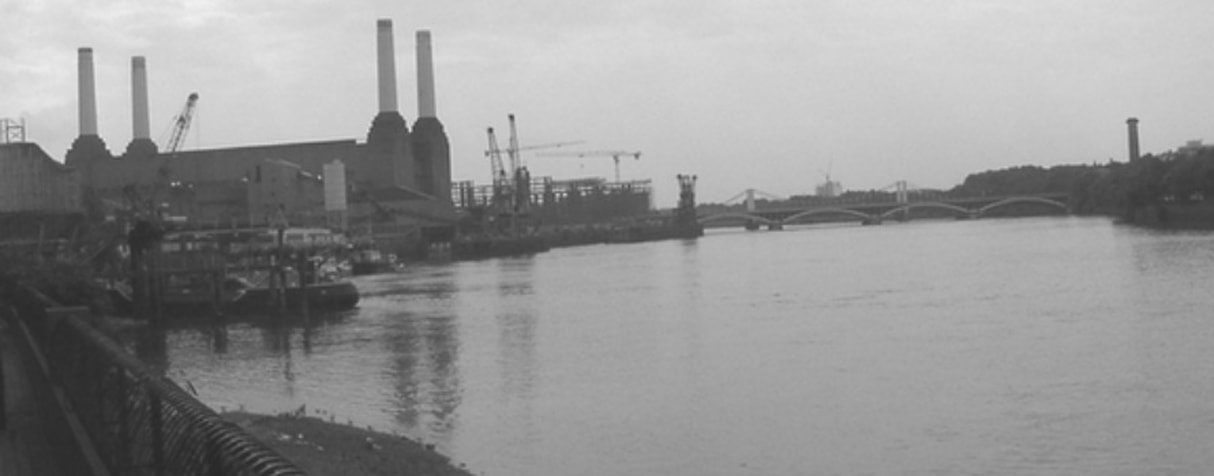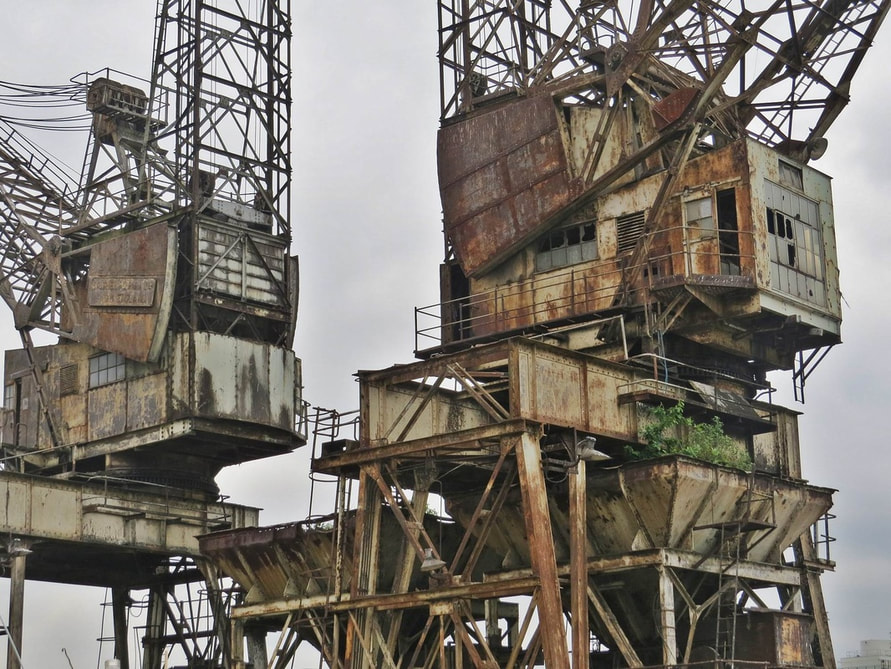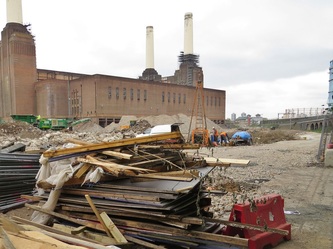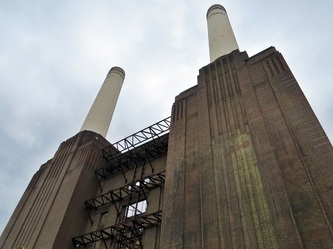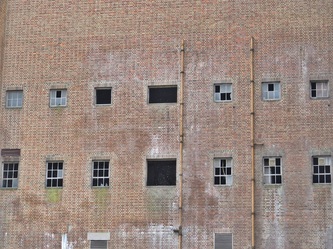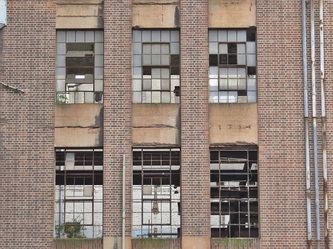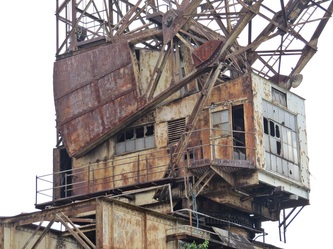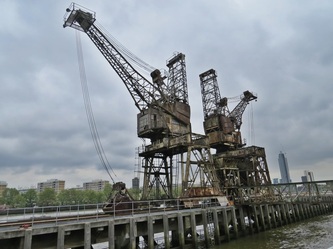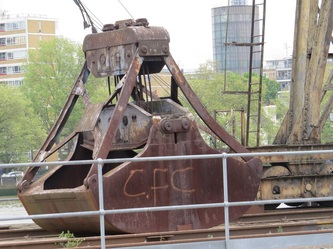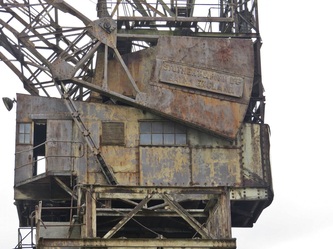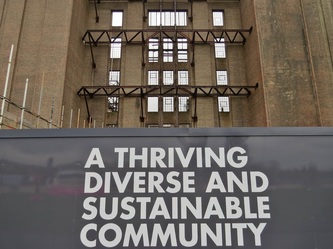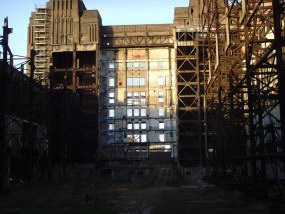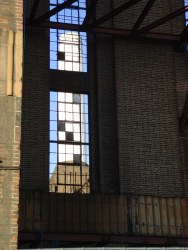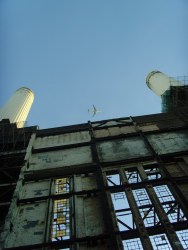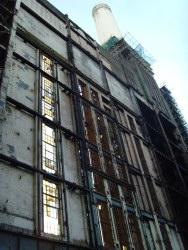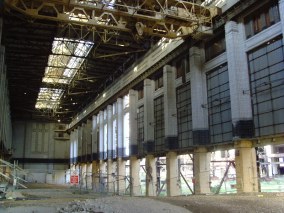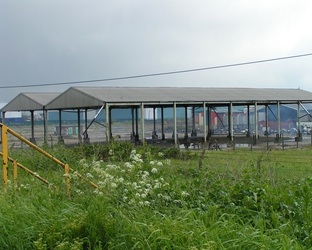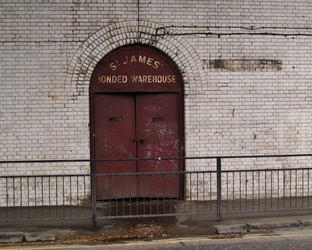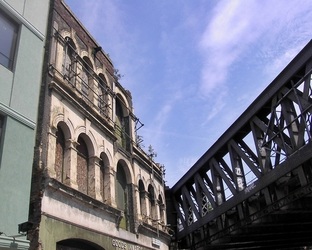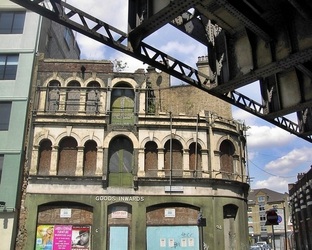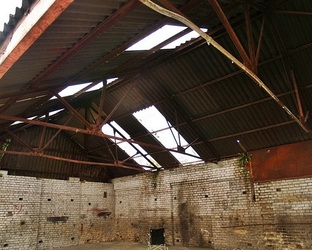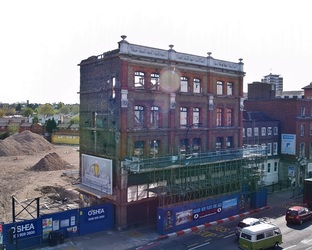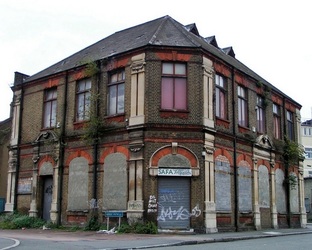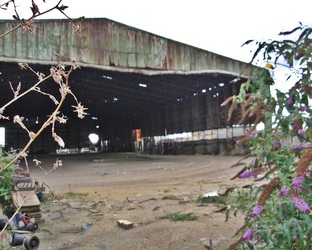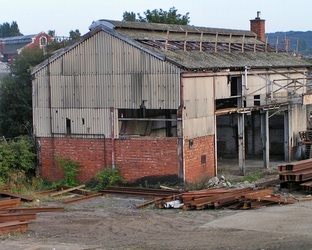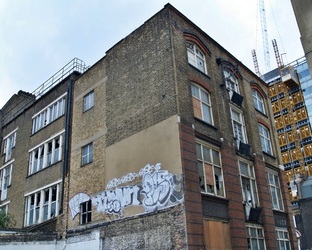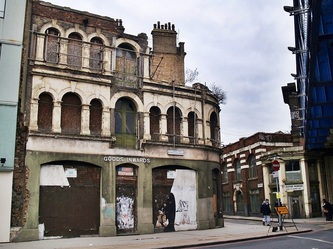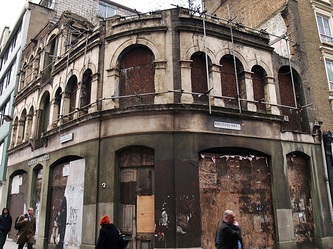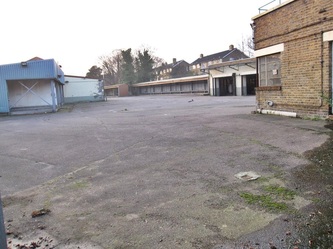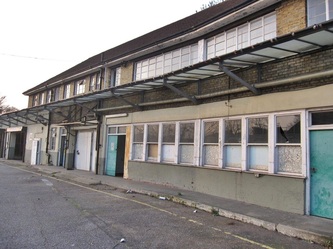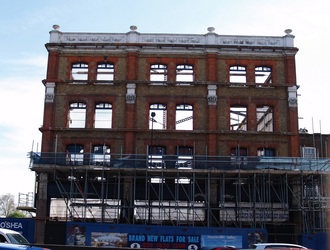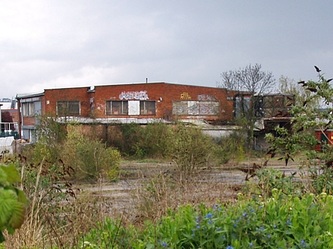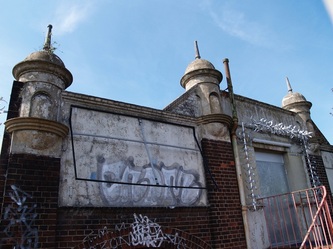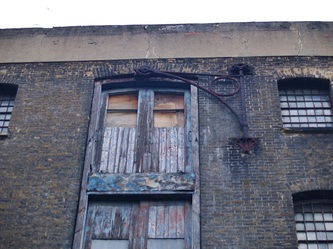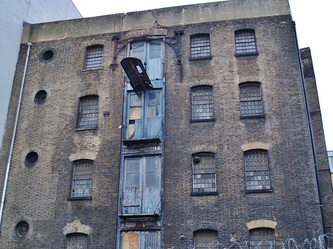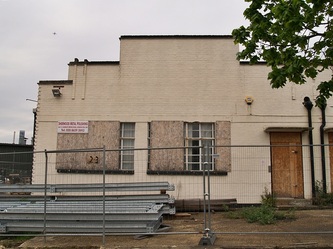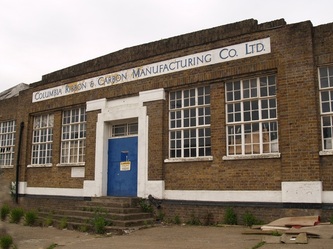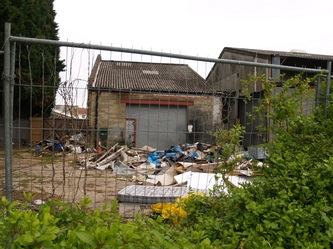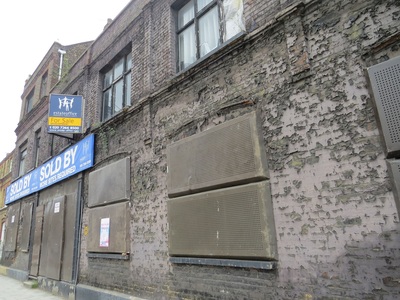Excelsior Industrial Estate - New Cross,SE15
This area forms part of wider plans named the Surrey Canal Triangle an area to the far NW of the Borough of Lewisham allocated for redevelopment. The land is bounded by railway lines and bisected by Surrey Canal Road. Millwall FC's stadium is within the Development Area.
Historic maps dating from 1766 shows that until the early 19th century the site was part of a wider area of undeveloped open fields. Then in 1807 the Grand Surrey Canal cut through these fields. Then industrial and workshop spaces were built alongside the canal. On the site of the Excelsior there were Leather Cleaning Works in 1897 and later Plastic Mouldings Works in 1951. The canal closed and was drained and filled in during the 1970s and Surrey Canal Road replaced the canal in this neck of the woods (See my guided walking tours for more information about the whole canal).
Some units are currently occupied by vehicle workshops and creative studios whilst the area is quite dilapidated awaiting it's fate in the hands of developers.
Historic maps dating from 1766 shows that until the early 19th century the site was part of a wider area of undeveloped open fields. Then in 1807 the Grand Surrey Canal cut through these fields. Then industrial and workshop spaces were built alongside the canal. On the site of the Excelsior there were Leather Cleaning Works in 1897 and later Plastic Mouldings Works in 1951. The canal closed and was drained and filled in during the 1970s and Surrey Canal Road replaced the canal in this neck of the woods (See my guided walking tours for more information about the whole canal).
Some units are currently occupied by vehicle workshops and creative studios whilst the area is quite dilapidated awaiting it's fate in the hands of developers.
Siemens Factory - Woolwich, SE18
Siemens Brothers and Company Limited was an electrical engineering design and manufacturing business.
The principal works were here on the Woolwich/Charlton borders adjacent to what is now the Thames Barrier, a site covering 35 acres, where cables and light-current electrical apparatus were produced from 1863. In it's final years, the Woolwich factory principally produced telephone exchanges for the General Post Office. After these became obsolete, these Woolwich works in 1968 were closed and 6,000 employees lost their jobs bringing much hardship to the area particularly as the area's main employer the Royal Ordnance Factory closed the previous year
Several buildings were damaged by bombs in World War II, including the oldest building of 1863-65. A range of two and three storey buildings (the white ones) from the 1870-90s are derelict. Across the road a number of larger buildings constructed in the first half of the 20th Century are also derelict. Many of the latter were used for light industrial and art studio purposes until recent years.
Plans have been submitted for nearly 500 homes at the former Siemens factory site. All but one of the derelict buildings will be restored. A large 5-storey L-shaped building built in 1911 will be demolished.
The principal works were here on the Woolwich/Charlton borders adjacent to what is now the Thames Barrier, a site covering 35 acres, where cables and light-current electrical apparatus were produced from 1863. In it's final years, the Woolwich factory principally produced telephone exchanges for the General Post Office. After these became obsolete, these Woolwich works in 1968 were closed and 6,000 employees lost their jobs bringing much hardship to the area particularly as the area's main employer the Royal Ordnance Factory closed the previous year
Several buildings were damaged by bombs in World War II, including the oldest building of 1863-65. A range of two and three storey buildings (the white ones) from the 1870-90s are derelict. Across the road a number of larger buildings constructed in the first half of the 20th Century are also derelict. Many of the latter were used for light industrial and art studio purposes until recent years.
Plans have been submitted for nearly 500 homes at the former Siemens factory site. All but one of the derelict buildings will be restored. A large 5-storey L-shaped building built in 1911 will be demolished.
Ladywell, SE13 - Adhesive Specialties Ltd
The office building, situated beside the River Ravensbourne, with a largely single storey factory extending to the rear was constructed in the 1930s. Its earliest recorded use was as a Laundry.
In 1988, the building was given a make-over by its current owner which included the insertion of Crittal type windows with 1930s style glazing bars and the addition of Art Deco style parapet detailing and glazed ceramic tile string course. All this served to enhance the character of the building. Back then the property was used as an office and factory by Adhesive Specialties Limited for the manufacture of specialist adhesive tapes.
The company ceased trading at this property around 2009 having relocated to premises outside London. Upon advice given by English Heritage the building was not considered to be of National significance as an example of 1930s architecture,due to the fact that the building had been remodelled in the 1980s.
The building was demolished in 2010 and replaced with flats. These pics were kindly provided by RS.
In 1988, the building was given a make-over by its current owner which included the insertion of Crittal type windows with 1930s style glazing bars and the addition of Art Deco style parapet detailing and glazed ceramic tile string course. All this served to enhance the character of the building. Back then the property was used as an office and factory by Adhesive Specialties Limited for the manufacture of specialist adhesive tapes.
The company ceased trading at this property around 2009 having relocated to premises outside London. Upon advice given by English Heritage the building was not considered to be of National significance as an example of 1930s architecture,due to the fact that the building had been remodelled in the 1980s.
The building was demolished in 2010 and replaced with flats. These pics were kindly provided by RS.
Youngs Ram Brewery - Wandsworth Sw18Youngs was covered in my Derelict London book a few years ago. Since then, the site lay empty apart from being used for the odd TV/film set location. Autumn 2014 has seen demolition of much of the site. The remainder is listed so will be incorporated into a new development. The earliest records of brewing on this site date back hundreds of years but in recent times its cramped location, and the fact that the local authority expressed an interest in acquiring and developing the land it stood on, prompted the brewery to consider its options, and in 2006 the decision was made to sell up and move to Bedfordshire. Chairman John Young died just days before the brewery closed, and its final brew was served at his funeral. Until the brewery closed, horses and drays were still used to deliver beer to local pubs and the site was home to a live ram and a flock of geese. In early 2014 Chinese property developer Greenland Holdings Group bought the site which has an investment value of £600m and is to be turned into 661 new homes, including a 36-floor building with 166 flats, and 9,500 square metres of shops, cafés and restaurants. The site will also house a brewing museum and a microbrewery. The Guardian reported in January 2014 "Critics of the London property development have argued that new luxury riverside apartments purchased by foreign buyers do nothing to ease the city's housing shortage." |
Jann Pruden writes to Derelict London: "I was delighted to see a photo of Youngs Brewery.My Sister taught at Wandsworth Tech College, we loved watching the Young's horses I believe they were Clydesdale the drivers in their bowler hats wrapped up to keep warm. I am thankful for giving me a glimpse into the past. I have resided in San Diego CA And, Scottsdale Arizona,for the, past 40 years, I'm in the, process of writing memories of life my life, especially the War years for my Grandchildren".
DARTFORD - WELLS FIREWORK FACTORY 2016
DARTFORD - WELLS FIREWORK FACTORY 2012:
CLAPHAM - BORG AND RANALLI
These are the remains of the workshops of Borg and Ranalli who built marble products. In 1910 it is believed that Spencer a banjo makers had their workshop here.
PLUMSTEAD - White Hart Road Depot
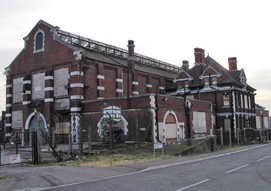
The council depot worksite contains a former electricity generating station, which is listed as Grade II. This complex of buildings was originally an early-Edwardian combined refuse incinerator and electricity generating station supplying both street and domestic lighting. Power generation ceased in 1923 and incineration in 1965 and it was subsequently modified to become a council depot. The interiors of the buildings contain interesting decorative finishes including doors, door surrounds, fireplaces,stairs and glazing within the offices and glazed brick interiors and mosaic flooring in the
main hall.
Steve wrote to Derelict London writes: "my Dad used to work at this depot from the mid-80s to early 90s as a security guard for the council, he used to watch for people getting through the fence to nick the batteries out of the rubbish carts that were parked there overnight. I used to visit him some nights on my motorbike at work, where he would feed the feral cats, foxes and anything else furry, one night he tripped in the gatehouse (pictured) hit his head on the weigh bridge equipment, knocked himself out and cut his head open.Apparently, the big building was used as a temporary morgue during WWII."
main hall.
Steve wrote to Derelict London writes: "my Dad used to work at this depot from the mid-80s to early 90s as a security guard for the council, he used to watch for people getting through the fence to nick the batteries out of the rubbish carts that were parked there overnight. I used to visit him some nights on my motorbike at work, where he would feed the feral cats, foxes and anything else furry, one night he tripped in the gatehouse (pictured) hit his head on the weigh bridge equipment, knocked himself out and cut his head open.Apparently, the big building was used as a temporary morgue during WWII."
By Clicking on the Amazon link Derelict London receives a small % of anything that you spend! hint hint....
DEPTFORD - Copperas Street
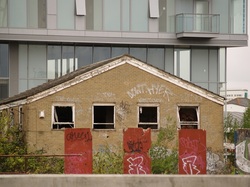
Copperas was a valuable substance used in the production of acids & chlorine. It was obtained from nodules found within London Clay. In 1746 England was among the largest sources of copperas in Europe. However, methods of production was changed during the 18th century and the Deptford works closed in 1828. Wheens soapworks was also located in Copperas Street - fat from the local cattle market together with rag ‘n’ bones collected by local totters was used to produce candles and soap. Since then, various industrial type units have come and gone and some remain derelict awaiting demolition and currently dwarfed by modern multi-storey buildings over the road.
GREENWICH - Greenwich Industrial Estate
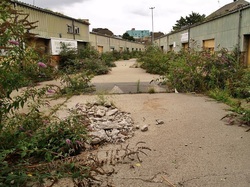
The two acre site has been vacant for the last few years and has had "problems with travellers and people breaking in". Local press reports on ambitious plans to transform Greenwich Industrial Estate into a "buzzing quarter with £100 million of development... a three star hotel, 180 residential units, 400 units of student accommodation, space for business start ups, an educational hub and a pedestrianised street. Developers Cathedral Group say they want to create a “vibrant, new and sustainable community” for west Greenwich.The land is currently owned by the council and for the last 10 years there have been various proposals to redevelop it.
Battersea Power Station and its Cranes
Battersea Power Station is undoubtedly the most famous derelict building in London. Opened in 1937 it was designed by Sir Giles Gilbert Scott, the architect also responsible for Bankside Power Station and Liverpool Anglican Cathedral, and it originally had a chimney at either end. After the Second World War another, externally identical station was built alongside, giving the building its now familiar four chimneys. When the additional work was completed in 1955, Battersea Power Station became the largest brick building in Europe.
The building is an unmissable landmark for the many people who commute from suburbia to Waterloo, and it has made numerous film and television appearances. It was, for instance, a setting in Alfred Hitchcock’s 1936 film Sabotage, and it later appeared in the Beatles film Help!, Monty Python’s The Meaning of Life and the 1995 film of Shakespeare’s Richard III. In 1964, the power station was featured in an episode of Doctor Who entitled ‘The Dalek Invasion of Earth’: set in the twenty-second century, it depicted the station converted to nuclear power. The building’s iconic status was emphasized once more in 1977 when it appeared on the cover of the Pink Floyd album Animals.
The power station closed in 1983 and plans were made to convert it into a Disney-style theme park, but costs escalated and work stopped in 1989, leaving the building in its present semi-derelict state. Since then, the power station has languished without a roof, its steelwork exposed to the elements and its foundations prone to flooding.
Work is now about to commence on major construction of residential property on this site. Almost all the 866 luxury apartments planned for the first phase of construction around the site of Battersea Power Station have been sold to mainly foreign investors, raising £675 million despite work on the development having not even begun. The flats are on sale from £350,000 for a studio to £6 million for a penthouse suite.
Subsequent sales will take place across a further six phases, delivering over 3,400 new homes in total. As for the Power Station building itself £100 million will be spent on demolishing and rebuilding the four chimneys, the steel frame, wash towers and brickwork.
Now the building is an iconic image for Londoners but what about these beautiful cranes on the riverside beside the Power Station in their own state of decay? The power station had an annual coal consumption of over 1,000,000 tonnes. The majority of this coal was delivered to the station from coal ports by coastal collier ships. The ships were "flat-irons" with a low-profile superstructure, fold-down funnel and masts to fit under bridges over the Thames above the Pool of London.
The jetty facilities used these two cranes to offload coal, with the capacity of unloading two ships at once, at a rate of 480 tonnes an hour. A conveyor belt system was then used to take coal to the coal storage area or directly to the station's boiler rooms. The conveyor belt system consisted of a series of bridges connected by towers. The coal storage area was a large concrete box capable of holding 75,000 tonnes of coal. This had an overhead gantry with a conveyor belt attached to the conveyor belt system, for taking coal from the coal store to the boiler rooms.
The building is an unmissable landmark for the many people who commute from suburbia to Waterloo, and it has made numerous film and television appearances. It was, for instance, a setting in Alfred Hitchcock’s 1936 film Sabotage, and it later appeared in the Beatles film Help!, Monty Python’s The Meaning of Life and the 1995 film of Shakespeare’s Richard III. In 1964, the power station was featured in an episode of Doctor Who entitled ‘The Dalek Invasion of Earth’: set in the twenty-second century, it depicted the station converted to nuclear power. The building’s iconic status was emphasized once more in 1977 when it appeared on the cover of the Pink Floyd album Animals.
The power station closed in 1983 and plans were made to convert it into a Disney-style theme park, but costs escalated and work stopped in 1989, leaving the building in its present semi-derelict state. Since then, the power station has languished without a roof, its steelwork exposed to the elements and its foundations prone to flooding.
Work is now about to commence on major construction of residential property on this site. Almost all the 866 luxury apartments planned for the first phase of construction around the site of Battersea Power Station have been sold to mainly foreign investors, raising £675 million despite work on the development having not even begun. The flats are on sale from £350,000 for a studio to £6 million for a penthouse suite.
Subsequent sales will take place across a further six phases, delivering over 3,400 new homes in total. As for the Power Station building itself £100 million will be spent on demolishing and rebuilding the four chimneys, the steel frame, wash towers and brickwork.
Now the building is an iconic image for Londoners but what about these beautiful cranes on the riverside beside the Power Station in their own state of decay? The power station had an annual coal consumption of over 1,000,000 tonnes. The majority of this coal was delivered to the station from coal ports by coastal collier ships. The ships were "flat-irons" with a low-profile superstructure, fold-down funnel and masts to fit under bridges over the Thames above the Pool of London.
The jetty facilities used these two cranes to offload coal, with the capacity of unloading two ships at once, at a rate of 480 tonnes an hour. A conveyor belt system was then used to take coal to the coal storage area or directly to the station's boiler rooms. The conveyor belt system consisted of a series of bridges connected by towers. The coal storage area was a large concrete box capable of holding 75,000 tonnes of coal. This had an overhead gantry with a conveyor belt attached to the conveyor belt system, for taking coal from the coal store to the boiler rooms.
Below are some interior pics courtesy of Graham T:
This is a gallery of some derelict factories & warehouses south of the river (click to enlarge)
Paul Talling's Derelict London - all photographs are copyright © 2003-2024
Click the envelope icon to join the mailing list for occasional news on website updates, new book releases and Paul's guided walking tours. Follow Derelict London on Facebook and Twitter
Please do not contact me with property/ filming/photo shoot location queries
Click the envelope icon to join the mailing list for occasional news on website updates, new book releases and Paul's guided walking tours. Follow Derelict London on Facebook and Twitter
Please do not contact me with property/ filming/photo shoot location queries

